Portable Easels: Your Essential Guide to Mobile Art Studios & Top Picks
Unleash creativity anywhere with our definitive guide to portable easels. Discover top models for plein air painting, oils, watercolors, and sketching. Learn about stability, materials, storage, and setup tips to elevate your outdoor art practice.
# The Ultimate Guide to Portable Easels: Your Mobile Art Studio, Unleashed
That feeling, you know it, right? The crisp morning air, maybe the scent of pine needles, the warmth of the sun on your back, and then – that sudden, insistent urge to capture it all. This is the siren call of plein air painting. I remember one crisp autumn morning, halfway up a hiking trail, when the light hit an ancient oak just perfectly. The colors, the atmosphere – it was a fleeting masterpiece waiting to be captured. And there I was, caught between pure inspiration and the frustrating realization that my current gear was miles away, probably still leaning against a studio wall. That, my friends, is exactly where the **portable easel** truly shines. It’s not just a piece of equipment; it’s an invitation, a tangible key to transforming any location into a functional workspace and liberating your art from four confining walls.
For many artists, myself included, the studio isn't a fixed place; it's wherever inspiration happens to strike, often outdoors – a practice we lovingly call `/finder/page/what-is-plein-air-painting`, from the French for "in the open air." This guide is designed to be your most comprehensive and engaging source for finding that perfect mobile companion. As a curator deeply immersed in the world of art and its creation, I’ve seen countless artists — from emerging talents to seasoned professionals — struggle with finding the right equipment to support their mobile practice. Or worse, feeling utterly confined to their indoor space when the call of the wild, or simply a new perspective, beckons. This guide aims to demystify the choices, offering a comprehensive look at the best portable easels available, meticulously chosen for artists who, like me, refuse to be confined. In this guide, we'll delve into the history, key considerations, various types, and even specific recommendations for portable easels, transforming your plein air dreams into reality. Let’s dive into what truly makes a great travel companion for your artistic journey.
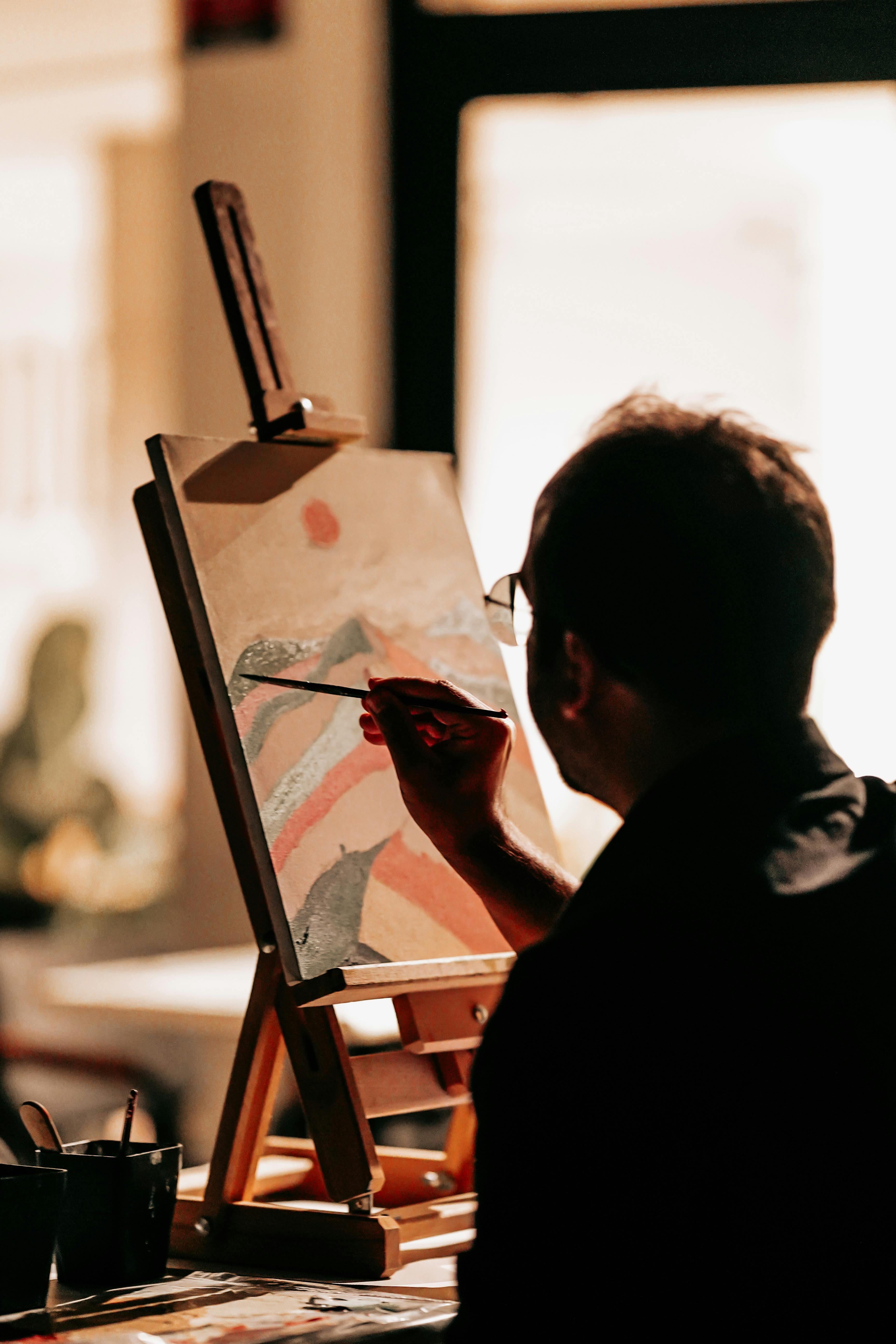
[credit](https://images.pexels.com/photos/18516626/pexels-photo-18516626/free-photo-of-man-painting-a-landscape.jpeg), [licence](https://creativecommons.org/public-domain/)
---
## The Allure of Plein Air: A Brief History of Outdoor Art
Plein air painting isn't just a fleeting trend; it's a profound tradition that, quite literally, revolutionized art. This enduring call to paint outdoors isn't new; in fact, the very tools that enable it have a rich history. Think of the Impressionists – Monet, Renoir, Pissarro – stepping out of their stifling studios to capture the fleeting light and atmospheric effects directly from nature. Before them, in the mid-19th century, the Barbizon School painters in France were already venturing into the Forest of Fontainebleau, laying the groundbreaking groundwork for painting outdoors. Figures like Jean-Baptiste-Camille Corot, a pre-Impressionist, made extensive use of portable equipment for direct observations of landscapes, a legacy beautifully echoed by English masters like Constable. Even Renaissance artists, though their tools were far less portable, often made outdoor studies to inform their studio works, highlighting the long-standing, irresistible draw of direct observation.
The true liberation came with a few key innovations: the invention of pre-packaged paint tubes (imagine grinding your own pigments on site!), the development of more portable easels, and the emergence of other practical aids like readily available, pre-primed canvases, lightweight sketching boards, folding stools, and easily transportable water containers. These advancements collectively freed artists from the confines of their ateliers. They allowed for a spontaneous, immediate connection with the subject, shifting the focus from idealized, academic compositions to raw, emotional, and subjective responses to the ever-changing world. It’s a legacy that directly influenced entire artistic movements by forcing artists to capture immediate observations of light and color, rather than idealized studio scenes, giving rise to the characteristic broken brushstrokes and focus on atmosphere that defined Impressionism. And honestly, this rich legacy feels like a personal invitation, doesn't it? A gentle but firm nudge to pick up our own easels and join that timeless tradition of `/finder/page/what-is-plein-air-painting`.
---
## Key Considerations When Choosing a Portable Easel
Selecting the ideal portable easel is not a one-size-fits-all endeavor. Trust me, it requires careful consideration of several factors to ensure it aligns perfectly with your artistic needs and dynamic lifestyle. Think of it as investing in your creative freedom, because really, that's what we're talking about here. If you’re anything like me, you’ve probably learned the hard way that a poorly chosen tool can quickly dampen even the most enthusiastic creative impulse, turning a joyous outing into a frustrating ordeal. So, let’s get this right. What truly matters when you're picking your mobile art companion?
### Weight and Compactness: Every Ounce Matters
Perhaps the most crucial aspect of a *portable* easel, don't you think? If you plan to hike to remote locations, navigate crowded public transport, or simply stroll a few blocks to a local park, every single ounce and inch matters. Because let's be honest, nobody wants to hike to that breathtaking vista only to realize their easel weighs more than their entire backpack, already laden with brushes, paint, and canvases. I’ve been there, lugging what felt like a small tree on a particularly ambitious hike, and it definitely saps some of the joy and energy from the experience! It's always a balancing act between being thoroughly prepared and feeling like a pack mule carrying the entire art supply store. Carrying an extra 5 lbs (2.3 kg) can feel like hauling an extra bottle of water, a small sketchbook, and a hefty rock when you're already burdened with paints and canvases – it's often the subtle difference between feeling like you're on an adventure and feeling like you're hauling a mini-fridge up a mountain.
Look for models that fold down into an impressively compact size and are lightweight enough to carry comfortably, ideally with a decent carrying strap or handle. Remember to consider the *total* weight – not just the easel itself, but also with your essential supplies packed inside. Those paint tubes, brushes, canvases, and mediums can quickly add up! My rule of thumb? The lighter and more streamlined it is, the more likely you are to actually bring it with you, and that, ultimately, is what really counts for your artistic consistency.
### Stability: Standing Strong Against the Elements
Painting outdoors exposes your precious setup to the unpredictable whims of the elements. A flimsy easel is, frankly, a recipe for pure frustration, or worse, a ruined artwork. Trust me, I've had a canvas take flight more times than I care to admit, often at the most inconvenient moment when I was just hitting my stride! Prioritize models with sturdy, often telescopic, legs and a wide, stable footprint. Some manufacturers even research wind ratings or incorporate specific design features like a **lower center of gravity** (achieved through a wider leg stance or a central hub design) or **cross-bracing** between legs on some tripod models to significantly enhance wind resistance. It’s about building confidence, not just holding a canvas.

[credit](https://images.zenmuseum.com/art/280/scan.jpeg), [licence](https://creativecommons.org/public-domain/)
When evaluating stability, actively test the leg articulation and locking mechanisms. Give the easel a gentle push and wiggle test; it absolutely shouldn't feel like it's about to collapse with your artwork on it. Consider how the easel's center of gravity changes when a canvas is loaded – that's essentially how balanced the easel is when a canvas is on it; a top-heavy easel can easily become unstable. Some easels include hooks for adding weight (like your backpack, a small sandbag, or even a rock you find on location) to significantly enhance stability in windy conditions. This is especially vital if you're working with larger canvases – say, anything above 24x36 inches (60x90 cm) – or applying vigorous, energetic brushstrokes. Also, the width of the leg spread (how far apart the legs can be set) dramatically impacts stability; wider stances are generally more secure. For tripod easels, consider the *number of leg sections*; fewer sections generally mean greater inherent stability but often a less compact folded size. Think about the ground you'll be on most often:
* **Soft ground (grass, soil):** Look for easels with pointed feet or optional spikes to dig in securely.
* **Hard ground (pavement, rock):** Rubber feet are absolutely essential to prevent slipping. A wide footprint helps distribute weight.
* **Uneven terrain:** Individually adjustable legs are a game-changer for finding a level working surface. For very soft ground like sand or mud, wider foot attachments or small, flat plates (similar to snowshoes) carried in your bag can distribute weight and prevent sinking. Stability, for me, is the absolute peace of mind I need when the wind picks up or a rogue squirrel investigates my setup. I once had a whole setup tumble after a sudden gust, just as I'd finished a delicate wash – a true, painful lesson in weighting!

[credit](https://live.staticflickr.com/8496/8449282114_0223311fe2_b.jpg), [licence](https://creativecommons.org/licenses/by-nc/2.0/)
### Material and Durability: The Foundation of Your Mobile Studio
The longevity and inherent stability of your easel often depend profoundly on its construction. I've found that the material choice is always a direct trade-off between weight, durability, and cost. Each has its own unique character and suitability for different adventures, and honestly, they even *feel* different to work with. Considering our growing awareness, the environmental impact of these materials is also a factor worth pondering, especially when thinking about an investment that should last years. So, let's break them down.
* **Aluminum** easels are undoubtedly popular, and for good reason. They're lightweight, naturally rust-resistant, and generally more affordable, making them excellent for frequent travel and urban sketching. However, their lower density means there's less mass to resist forces like wind, so they can sometimes feel less stable in a stiff breeze. While they might be prone to bending if you're not careful – I once had one buckle slightly after a particularly clumsy packing incident (my fault, not the easel's!), though to be fair, I have a knack for making even the most robust equipment submit to my packing techniques! It's worth noting that **thicker-walled aluminum tubing**, or components made from **extruded** (as opposed to cast) aluminum, offer significantly more robustness than thinner tubes, and the quality of the joints and locking mechanisms is just as crucial as the material itself. From a sustainability perspective, aluminum is highly recyclable, which is a big plus, but its extraction and initial processing can be energy-intensive.
* **Wood easels**, particularly those crafted from **seasoned beechwood**, offer superior inherent stability and a classic aesthetic that many, myself included, find deeply appealing. "Seasoned" wood has been carefully dried to remove moisture, making it less prone to warping or cracking. Woods like mahogany, maple, or oak, though heavier, can offer even greater durability and a luxurious, substantial feel, often preferred by those working with larger canvases or applying heavier, more vigorous brushstrokes. There's a certain timeless charm to a wooden easel, echoing the traditions of masters, and the `/finder/page/art-storage-solutions-for-collectors` for a beautiful wooden easel can be its own reward. The feel of aged, well-cared-for wood develops a unique character that newer materials simply can't replicate. For more budget-friendly options, woods like pine or poplar are sometimes used, but be mindful that these might be less durable or more prone to warping over time. The sustainability of wood depends heavily on responsible sourcing, so always look for **FSC-certified** options where possible to ensure ecological and ethical practices.
* And then there's **carbon fiber**. It’s still somewhat the new kid on the block for premium tripod easels, and it truly is remarkable. Incredibly lightweight and yet astonishingly strong, it offers exceptional stability for its minimal mass. It feels almost contradictory, like holding a feather that could support a brick. Beyond strength-to-weight, carbon fiber also has excellent **vibration-dampening properties**, which can be a real plus for intricate detail work by minimizing the subtle movements that can occur during delicate brushwork. The downside, of course, is that this advanced material comes with a significantly higher price tag, placing it firmly in the investment category, and it's still a niche material primarily found in high-end tripod designs, not commonly across all easel types. Environmentally, carbon fiber production is energy-intensive and recycling is challenging, so its lifespan becomes a crucial factor – a durable piece is a more sustainable piece.
* While less common, some manufacturers also experiment with **plastic composites** or **reinforced fiberglass**. These can offer a good balance of weight and durability at a more accessible price point, but always scrutinize the build quality; not all plastics are created equal. Be aware that lower-quality plastics can be susceptible to UV damage or become brittle in extreme temperature changes over time. High-end, very specialized easels might even incorporate **titanium alloys** for extreme durability and lightness, but these are typically found in highly niche, expensive models. Ultimately, it’s about finding that elusive balance between **robustness** and **portability** that truly suits your adventurous spirit and the demands you place on your creative tools.

[credit](https://www.pexels.com/photo/creative-art-studio-with-brushes-and-paints-29589096/), [licence](https://creativecommons.org/public-domain/)
### Adjustability and Ergonomics: Tailoring Your Workspace to You
I've found that my own comfort while painting directly impacts my focus, my endurance, and ultimately, the quality of my work. This isn't just a preference; it's an ergonomic necessity. A good portable easel should allow for ample adjustment in height, angle, and canvas support, enabling you to maintain a healthy posture and avoid fatigue or strain during long sessions. Can it accommodate both standing and sitting positions with ease, regardless of your height? Can it tilt flat for delicate watercolor or pastel work (crucial for controlling washes and preventing pigment from running off), or hold a canvas upright to manage how gravity affects the flow of oil or acrylic paints? These seem like small details, but they make a world of difference for your body and your art.
Pay meticulous attention to the locking mechanisms for these adjustments, as their reliability is paramount:
* **Twist locks:** Common on tripod legs, where you rotate a sleeve to tighten. Generally secure, but can sometimes seize with dirt, sand, or dried paint, requiring periodic cleaning and lubrication. I've personally had these stick in dusty environments, turning a quick pack-up into a battle of wills.
* **Lever locks (flip-locks):** Quick and easy, using a quick-release clamp. Check for robust construction and material (often metal or high-quality composite) to avoid slippage or premature wear over time. These are brilliant for speed, but sometimes, if not careful, they can pinch skin – a small price for rapid deployment, perhaps!
* **Friction hinges:** Often used for angle adjustments on sketchboxes or canvas trays, offering smooth, continuous adjustment without distinct locking points. Ideal for fine-tuning angles, ensuring your surface is *just right*.
* **Ratchet systems:** Found on some canvas trays, offering precise height adjustments with a satisfying click, but typically with discrete steps rather than continuous movement.
* **Set screws or clamping mechanisms:** Sometimes used for more robust, semi-permanent adjustments, offering immense stability once tightened, though often slower to adjust and potentially requiring a small tool. These are the "set it and forget it" type, great for studio-like stability.
Also, consider the security of the canvas holding mechanism, especially if you work with heavier **impasto** techniques (thicker, textural paint application) or with very flexible canvases. The thickness of your canvas frame (**stretcher bars**) or panel can also affect how securely it fits into the easel's clamps or holders; some easels are better suited for thinner panels than thicker gallery-wrapped canvases. Versatility here is key, and it directly relates to your ability to maintain proper posture and avoid unnecessary strain during long sessions. An easel that adapts to *you*, not the other way around, is a true game-changer for your `/finder/page/understanding-balance-in-art-composition` and overall ergonomic well-being.
### Storage and Workspace: Your Mobile Palette and Supplies
Some portable easels, like the classic French or half-box models, come wonderfully equipped with built-in storage compartments, essentially serving as a fully self-contained mobile studio. This means room for numerous paint tubes (often 10-15 standard tubes), several brushes, palettes, `/finder/page/best-acrylic-mediums-for-abstract-artists` or other **mediums** (substances artists add to paints to alter their properties like drying time, viscosity, or finish), rags, and even a small sketchbook. While incredibly convenient – it's truly like carrying a mini art shop – this added functionality often comes with increased weight and bulk, which is a trade-off.
I've learned that it's surprisingly easy to forget those small, crucial items: a pencil, an eraser, a small cleaning cloth, a `/finder/page/what-is-a-palette-knife-and-how-to-use-it` – or even that tiny tube of white paint when you desperately need it for highlights! Integrated storage helps ensure these are always with you, perhaps organized with small compartmentalized trays or brush rolls within the drawers. For minimalist artists, or those who truly hike into remote areas, a simple, lightweight tripod easel paired with a separate, purpose-built art bag might be far more preferable. Watercolor artists, for instance, might prioritize ultimate portability over extensive storage, often only needing a small palette and a few brushes, whereas oil painters will require more space for numerous tubes, mediums, and solvents. This makes decisions about `/finder/page/definitive-guide-to-paint-types-for-artists` and `/finder/page/best-sketching-pencils-for-artists` critical for how you pack. Don't forget incredibly useful accessories like **folding/collapsible palette cups** for water or mediums, or a small, sealable **brush washer** – I swear by mine for keeping solvents contained. The ultimate question to ask yourself is: how much of your studio do you *really* need to bring with you today?
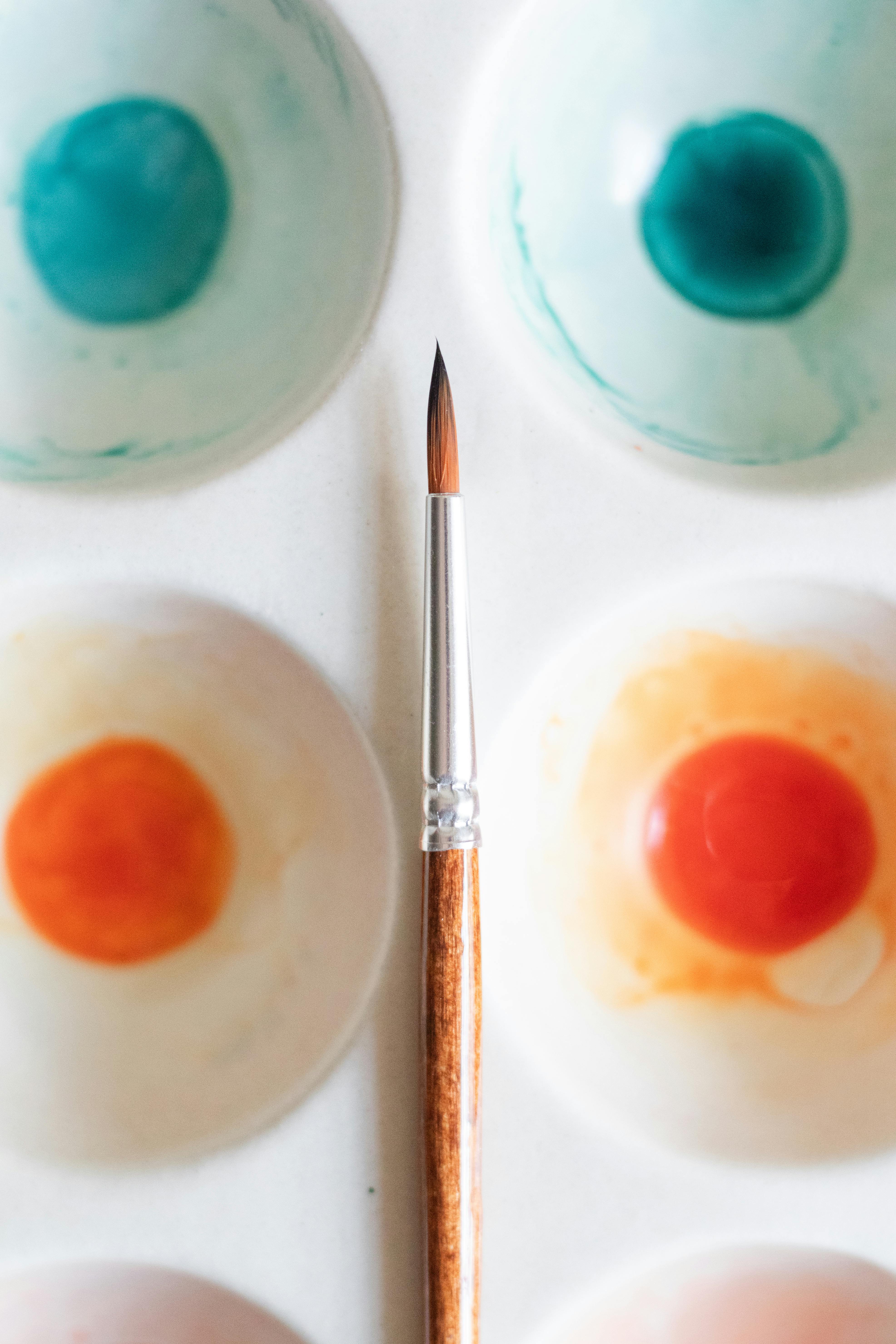
[credit](https://images.pexels.com/photos/17792185/pexels-photo-17792185/free-photo-of-a-palette-with-watercolor-paints-and-a-brush.jpeg),
[licence](https://creativecommons.org/public-domain/)
### Assembly and Portability: Maximize Painting, Minimize Fumbling
The best portable easel, in my humble opinion, is one that is so easy to set up and take down that you hardly notice the process. It should allow you to maximize your precious painting time and minimize frustrating fumbling. Look for intuitive designs that don't require complex instructions, tiny, easily lost parts (I swear those little screws have a secret portal to another dimension!), or tools you'll inevitably drop in the grass (ask me how I know!). Features like quick-release clips, clearly marked telescopic sections, and self-explanatory locking mechanisms are massive advantages. A smooth, frustration-free transition from packed to painting-ready is a significant advantage, especially when working on location and chasing that fleeting, glorious light. Every minute spent fumbling with knobs or deciphering cryptic instructions is a minute not spent creating, and trust me, those moments of inspiration don't wait around.
When it comes to telescopic legs on tripod easels, there are typically two main locking mechanisms:
* **Quick-release clips (flip-locks):** Incredibly fast to use, allowing for rapid deployment and packing. However, you need to check for robust construction to avoid slippage, especially over time. They can sometimes pinch skin if you're not careful – a minor annoyance for the speed they offer.
* **Twist-locks:** Often offer a more secure hold once tightened, but can sometimes be slower to adjust and are more prone to seizing up if dirt, sand, or dried paint gets into the mechanism. I've had both, and each has its moments – often I prefer quick-release for sheer speed, but twist-locks give me that extra peace of mind on very uneven, precarious ground.
### Ease of Cleaning and Maintenance: Keeping Your Companion Pristine
Different materials, as you might expect, demand different care, and neglect can quickly diminish the life and appearance of your easel. **Wooden easels** often require you to wipe down paint splatters immediately to prevent staining – a lesson I learned the hard way with a particularly stubborn streak of viridian that became a permanent fixture! They also benefit from occasional conditioning to prevent drying and cracking, especially if exposed to varying humidity. If your wooden easel has a **varnished finish**, a simple damp cloth is usually sufficient for cleaning, while **oiled finishes** might need re-oiling periodically with specific wood conditioners like beeswax polish or a natural tung oil blend. If metal components are present, avoid harsh chemicals that could strip finishes or cause corrosion.
**Aluminum and carbon fiber** models are generally much easier to clean with just a damp cloth, though their mechanisms (joints, clips, telescopic sections) might still benefit from periodic lubrication and checking for debris. Look out for sand, dried paint, or tiny leaves getting stuck in the telescopic sections or within the locking mechanisms. A **dry silicone spray** (like a bicycle chain lubricant, but ensure it's specifically a *dry*, non-oily formula) works well for most moving metal parts, preventing rust and ensuring smooth glide without attracting too much dust. For very sticky or dirty parts, a tiny amount of **graphite powder** can also work wonders as a dry lubricant, though be mindful that graphite can attract dust more than silicone. Ensure that any lubricants used are art-safe and won't interact negatively with your painting supplies. Considering how easily your easel can be cleaned and maintained ensures its longevity and keeps it looking respectable for your next outdoor adventure. A clean easel is a happy easel, and a happy artist!

[credit](https://images.pexels.com/photos/24390314/pexels-photo-24390314/free-photo-of-artist-painting-at-park.jpeg), [licence](https://creativecommons.org/public-domain/)
### Price Point: Balancing Investment and Ambition
Portable easels span a surprisingly wide financial range, from very affordable basic models perfect for students or casual sketchers, to professional-grade, investment pieces built meticulously to last a lifetime. While a higher price often correlates directly with better materials, superior craftsmanship, more advanced features, and often, a better brand reputation or warranty, I've found that there are also excellent mid-range options that offer superb value without breaking the bank. My advice? Balance your budget with your specific needs, the frequency of your outdoor painting excursions, and the seriousness of your artistic pursuit. Don't feel you need the most expensive model to start, but also recognize that a quality tool is truly an investment in your comfort, efficiency, and creative output. It's all about finding that sweet spot where your budget meets your creative ambitions, ensuring you get the best *value for money*.
Here's a more granular breakdown of what you might expect at different price tiers, helping you gauge your investment:
| Type | Price Range | Key Features & Expected Quality | Canvas Weight Limit | Max Stretcher Bar Depth |
| :-------------------------------- | :---------- | :-------------------------------------------------------------------------------------------------------------------------- | :------------------ | :---------------------- |
| **Entry-level Tripods** (Aluminum/Plastic) | $30 - $70 | Thinner aluminum, plastic joints; basic, lightweight, best for light outdoor use on calm days or indoor sketching. | ~2-3 kg (4-7 lbs) | ~1.5 cm (0.6 inches) |
| **Mid-range Tripods** (Better Aluminum/Basic Wood) | $70 - $150 | Thicker aluminum or solid basic wood; improved stability, smoother adjustments, suitable for regular hobbyists. | ~5 kg (11 lbs) | ~2 cm (0.8 inches) |
| **Sketchboxes / Tabletop Easels** (Wood/Aluminum) | $80 - $250 | Decent materials, good internal organization; contained setups for smaller works, often for specific mediums. | ~5 kg (11 lbs) | ~2.5 cm (1 inch) |
| **Half-Box Easels** (Wood) | $200 - $400 | Integrated storage, enhanced stability, robust for serious plein air; good balance of storage and portability. | ~7-10 kg (15-22 lbs) | ~3 cm (1.2 inches) |
| **French Easels / Premium Tripods** (High-Quality Wood/Carbon Fiber) | $350+ | Exceptional durability, stability, full features; seasoned hardwood or cutting-edge carbon fiber for extensive outdoor work. | ~10-15 kg (22-33 lbs) | ~3.5 cm (1.4 inches) |
When does one upgrade? If you find yourself consistently frustrated by limitations in stability, storage, or canvas size with your current easel, or if your frequency of outdoor painting dramatically increases, it might be time to consider moving up a tier. It's about letting your tools wholeheartedly support your growing ambition, not hold you back.
### Customization and Troubleshooting: Making it Truly Yours
I've found that artists are endlessly inventive, and their easels often reflect this ingenuity. Many artists modify their portable easels to better suit their unique workflow. Common customizations include adding extra shelving (often magnetic or clamp-on) for brushes and palette cups, installing small LED lights for working in low light, or even creating custom internal dividers for sketchbox easels to better organize `/finder/page/definitive-guide-to-paint-types-for-artists` and `/finder/page/best-oil-painting-brushes-for-artists`. Don't be afraid to personalize your setup!
Inevitably, however, even the best equipment can encounter minor issues. Here are some quick troubleshooting tips, and remember, preventative maintenance (like cleaning mechanisms *before* they seize) can save a lot of headaches:
* **Wobbly Easel:** First, check all locking mechanisms and ensure legs are fully extended and firmly locked. If on uneven ground, individually adjust legs. If still wobbly, try adding weight to the central hook or a leg (your backpack works!). Inspect for loose screws and tighten them. Ensure that the tripod's leg spread is as wide as possible for maximum stability.
* **Stuck Telescopic Leg/Lock:** Clean thoroughly with a damp cloth to remove dirt or dried paint. For twist-locks, try a dry silicone spray lubricant. For flip-locks, check for any bent parts or debris caught in the hinge; sometimes a gentle jiggle while wiggling the leg can free it.
* **Canvas Slipping:** Ensure the canvas holder is securely tightened. If your canvas stretcher bars are very thin, you might need to add a small shim (e.g., a piece of cardboard) to help the clamps grip more securely. Check the rubber pads on the canvas holder for wear – worn pads reduce friction and grip.
* **Damaged Hinge/Joint:** For minor issues, sometimes a small amount of super glue (carefully applied!) or a replacement screw can fix things. For major damage, contact the manufacturer or a local repair shop. If the damage affects the easel's structural integrity or safety, it’s often safer to consider a replacement.
---
## Choosing Your Easel by Medium and Style
The best portable easel for you isn't just about how much it weighs, but profoundly about how it supports your specific artistic practice. Different mediums and styles demand different functionalities, and picking one that perfectly aligns with your process can dramatically enhance your outdoor experience. After considering the core features, the next crucial step is matching them to your unique artistic practice. How does your chosen medium fundamentally influence your easel needs? Let's explore.
* **Oils & Acrylics (especially with impasto):** You'll need maximum **stability** and a supremely secure canvas holder to withstand vigorous brushstrokes and the unique challenges of `/finder/page/definitive-guide-to-paint-types-for-artists`. A sturdy French easel or a robust half-box easel (often wooden) is ideal. For larger works, a heavy-duty tripod easel with a wide footprint and a strong canvas tray is also a strong contender. Look for easels that can hold a canvas upright, as gravity plays a significant role in how these paints behave, especially with `/finder/page/mastering-glazing-techniques-in-oil-painting` or bold `/finder/page/basic-brushstrokes-for-acrylic-painting`. You'll also need a canvas holder that can securely grip thicker stretcher bars, common with these mediums (e.g., up to 3-3.5 cm / 1.2-1.4 inches).
* **Watercolors & Gouache:** These mediums often require you to work on a relatively **flat or slightly angled surface** to precisely control washes and prevent pigments from running. Sketchbox easels are fantastic for this, often having lids that lie flat. Many tripod easels can also be adjusted to a near-horizontal position. Portability is often a priority here, so lightweight aluminum or carbon fiber tripods are popular, often paired with `/finder/page/best-watercolor-paper-for-artists-review` or `/finder/page/reviewing-the-best-professional-watercolor-sets`. Easels that can accommodate thinner painting panels (e.g., less than 1.5 cm / 0.6 inches thick) are also a plus.
* **Pastels & Charcoal:** Similar to watercolors, pastel artists often prefer a slightly **angled or flat surface** to minimize dust fall-off and keep pigments where they belong. A sketchbox or a tabletop easel offers a contained environment, and some even have specific features to catch pastel dust. Again, the ability to work at a shallow angle is key. For more on this, consider a guide on `/finder/page/a-beginners-guide-to-using-oil-pastels`.
* **Sketching & Urban Journaling:** **Minimal weight and rapid deployment** are paramount. A compact, lightweight aluminum tripod easel or even a small tabletop easel (if you confidently rely on existing surfaces) is perfect. Integrated storage isn't usually necessary, as you'll likely carry a small bag for `/finder/page/best-sketching-pencils-for-artists`, pens, and a sketchbook, focusing on the `/finder/page/illustration-vs-fine-art-whats-the-difference` for capturing immediate impressions.
* **Mixed Media & Experimental:** For artists who blend various techniques, **versatility and adjustability** are absolutely crucial. A convertible or hybrid easel, or a highly adjustable tripod that can accommodate different working angles and canvas sizes, would be beneficial. Considerations about `/finder/page/exploring-texture:-my-favorite-techniques-for-adding-depth-to-abstract-paintings` or `/finder/page/the-definitive-guide-to-mixed-media-in-abstract-art-techniques-materials-and-contemporary-masters` might also play a significant role here, requiring an easel that can handle various weights and surface types.
* **Sculpting & 3D Studies:** While not for direct sculpting, portable easels can be invaluable for drawing studies of models or armatures, or for securely supporting reference materials. Here, supreme stability is key, and the ability to securely hold a reference image or even a small, lightweight model might require specific clamping mechanisms or a very sturdy tabletop easel.

[credit](https://images.pexels.com/photos/7859311/pexels-photo-7859311.jpeg), [licence](https://creativecommons.org/public-domain/)
---
## Types of Portable Easels: Finding Your Perfect Match
With a clearer understanding of what makes a good portable easel and how to match it to your medium, let's now explore the diverse range of styles available. Each type offers distinct advantages for various artistic practices and can significantly impact how you approach your work, whether you're grappling with `/finder/page/how-to-choose-the-right-canvas-for-acrylic-vs-oil` or simply sketching ideas. From the classic elegance of a French easel to the minimalist efficiency of a tripod, there’s a companion out there waiting for you, and each one is a different take on `/finder/page/what-is-an-easel-and-what-types-are-there`.
First, a quick overview of what you can expect from each type:
* **French Easels:** The full, traditional mobile studio with extensive storage and robust stability.
* **Half-Box Easels:** A more compact version of the French easel, balancing storage and portability.
* **Tripod Easels:** Prioritize ultimate lightness and rapid setup, with minimal built-in storage.
* **Sketchbox Easels:** Self-contained, portable boxes ideal for tabletop use and smaller works, often with integrated storage.
* **Tabletop Portable Easels:** The most minimalist and affordable option, requiring an existing flat surface.
* **Convertible/Hybrid Easels:** Offer versatility by combining features from different types, adapting to various scenarios.
Now, let's dive into the details of each type.
### French Easels
These classic easels are, in my view, the epitome of a portable studio. Imagine the Impressionists, out in the fields, capturing fleeting light – they were likely using something very much like this. Historically, they were absolutely essential for artists like Monet and Pissarro, who needed to transport a full setup for lengthy outdoor sessions with oils. They feature a sturdy, often beautifully crafted wooden box that elegantly opens to reveal generous storage compartments for your supplies, a built-in palette, and a collapsible easel mechanism. They are robust, highly functional, and perfect for extended plein air sessions where you truly need all your tools readily at hand. Their traditional aesthetic is also a significant draw for many, echoing that rich legacy of outdoor art. These are generally best for medium to large canvases, typically up to around 32 inches (81 cm) in height, sometimes more depending on the specific model, supporting canvases weighing up to 10-15 kg (22-33 lbs). They can also accommodate canvases with thicker stretcher bars, usually up to 3.5 cm (1.4 inches).
* **Pros:**
* Excellent inherent stability, particularly with seasoned wooden models, capable of withstanding moderate breezes.
* Generous integrated storage for a full setup (paints, brushes, mediums, rags, solvents, smaller canvases).
* Convenient built-in palette (often wooden or glass).
* Classic, inspiring aesthetic and robust durability that feels truly professional.
* **Cons:**
* Often the heaviest and bulkiest option, making long treks or public transport challenging (typically 5-7 kg / 11-15 lbs).
* Can be slower and slightly more involved to set up than simpler tripod models.
* Higher price point reflects its quality and complexity.
* **Ideal User:** Serious plein air oil or acrylic painters, artists who need a comprehensive, organized mobile studio, those who primarily travel by car, or artists working on medium to large canvases who prioritize stability and full functionality.
### Half-Box Easels
Think of half-box easels as the slightly more agile and streamlined younger sibling of the French easel. They are similar in concept – a wooden box with integrated storage and an easel mechanism – but typically smaller, lighter, and less bulky. They offer a fantastic compromise between full storage capacity and improved portability. You get the convenience of a contained setup without the full weight and bulk of a traditional French easel, making them a really good choice for those who need some organized storage but want to remain a bit more mobile. Expect storage for about half the supplies of a full French easel, perhaps 8-10 standard paint tubes, a handful of brushes, and a few mediums. These models typically accommodate small to medium canvases, up to about 24-28 inches (60-70 cm) in height, generally supporting canvases weighing up to 7-10 kg (15-22 lbs). They usually fit canvases with stretcher bars up to 3 cm (1.2 inches) thick.
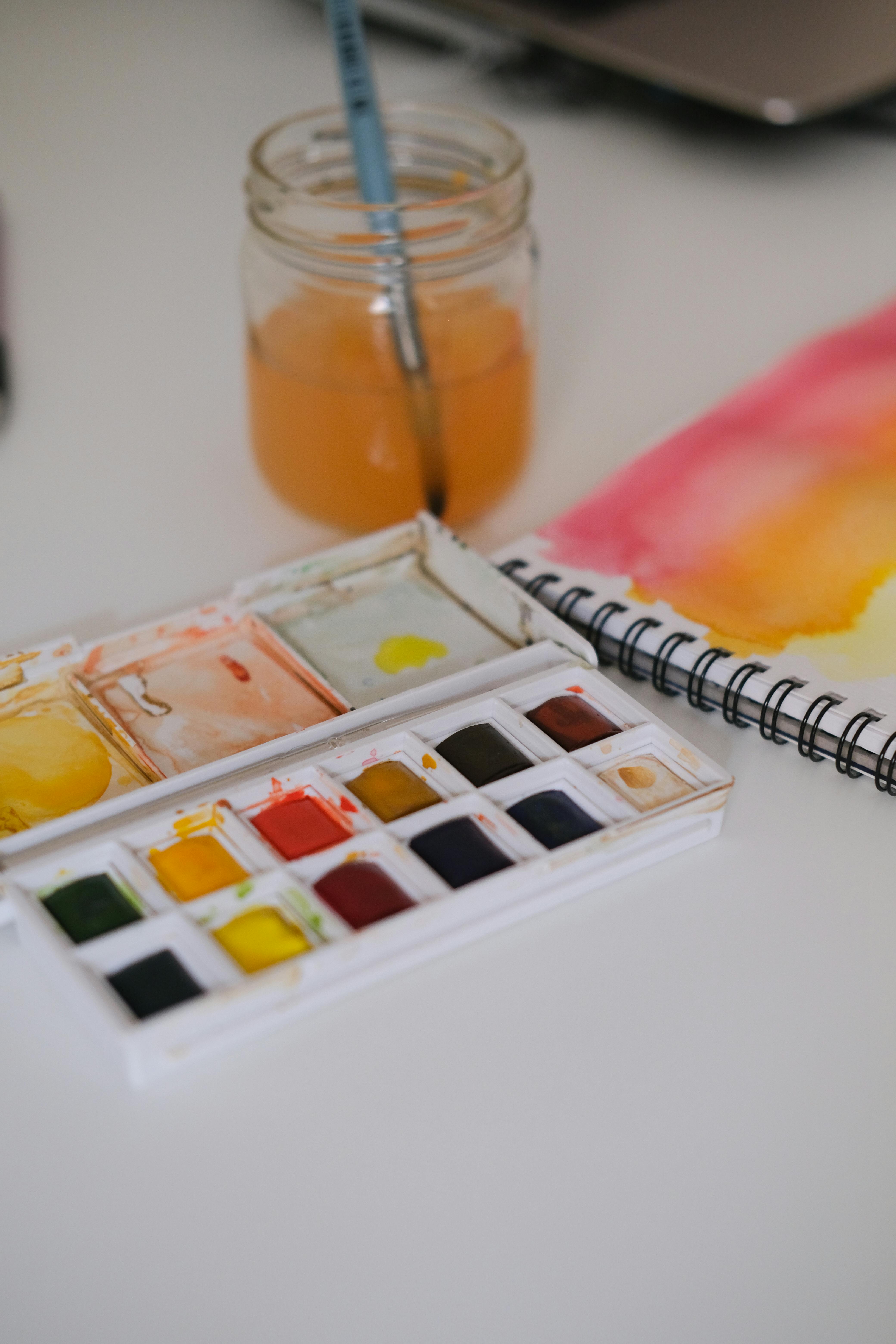
[credit](https://images.pexels.com/photos/13600524/pexels-photo-13600524.jpeg), [licence](https://creativecommons.org/public-domain/)
* **Pros:**
* Good balance of storage (for essential supplies) and portability (lighter than French easels).
* Reasonably stable, often including a wooden palette.
* Maintains a classic feel with traditional materials and craftsmanship.
* Faster to set up than a full French easel.
* **Cons:**
* Less storage than a full French easel, so you might need to be more selective with supplies.
* Still heavier than simple tripod easels (typically 3-5 kg / 7-11 lbs).
* Might not comfortably accommodate the largest canvases or very heavy impasto works.
* **Ideal User:** Plein air artists who need organized storage but prioritize moderate portability, those working with slightly smaller canvas sizes, or artists who enjoy the traditional aesthetic without the full bulk of a French easel.
### Tripod Easels
These are the workhorses for artists who prioritize minimal weight and rapid deployment above all else. Highly versatile and generally the most lightweight option, tripod easels consist of three telescopic legs and a simple canvas support. Materials vary widely, from economical aluminum to cutting-edge carbon fiber. They are incredibly quick to set up and pack down – often in less than a minute, which is brilliant for chasing that fleeting light. While they offer minimal or no integrated storage (meaning you’ll almost certainly need a separate bag for your paints and brushes, perhaps a `/finder/page/art-storage-solutions-for-collectors` for your tools!), their featherlight weight makes them absolutely ideal for hiking, cycling, or those spur-of-the-moment sketching trips. You'll often see these used for `/finder/page/what-is-plein-air-painting` because they are so unobtrusive. Many also allow for easy switching between portrait and landscape canvas orientation. When choosing, pay attention to the potential width of the leg spread; a wider stance offers significantly greater stability, especially with larger canvases. Tripod easels are incredibly versatile regarding canvas size, often supporting anything from small panels up to very large canvases (e.g., 40-50 inches / 100-127 cm high) if the easel is sturdy enough, generally with a canvas weight limit of 5-10 kg (11-22 lbs). They typically accommodate canvases with stretcher bars up to 2.5 cm (1 inch) thick, though some heavy-duty models can handle more. They are also widely compatible with clamp-on accessories like small tables for water cups or palettes, extending their utility.

[credit](https://images.zenmuseum.com/art/522/scan.jpeg), [licence](https://creativecommons.org/public-domain/)
* **Pros:**
* Extremely lightweight (often 1-3 kg / 2-7 lbs) and very compact when folded, making them ideal for portability.
* Very fast to set up and take down, maximizing precious painting time.
* Often the most affordable category, offering great value for beginners or casual users.
* Accommodate a wide range of canvas sizes and orientations with ease, and often compatible with clamp-on accessories like trays or palette holders.
* **Cons:**
* Minimal to no integrated storage, definitively requiring a separate art bag for all supplies.
* May be less stable than box easels (especially in windy conditions), often requiring extra weighting (e.g., hanging your backpack) for security.
* Less robust against accidental bumps compared to solid wooden designs.
* **Ideal User:** Hikers, urban sketchers, watercolorists, students, or any artist prioritizing ultimate portability, speed of setup, and a minimalist approach for quick studies and on-the-go inspiration.
### Sketchbox Easels
For those who prefer a contained, compact workspace, sketchbox easels are a revelation. These are essentially sturdy wooden or durable plastic boxes with a handle and internal compartments, often featuring a lid that converts into a canvas or panel support. They are ideal for artists working with smaller formats (think anything up to 16x20 inches / 40x50 cm), watercolors, pastels (they truly shine here, as the flat working surface helps manage dust), or detailed studies, providing a tidy workspace and conveniently organized storage. Some larger versions can even be mounted on a separate tripod for added height, transforming them into a standing easel. They're like a delightful mini-studio that can comfortably sit on your lap, a picnic table, or even a rock. They often provide a flat working surface, which is invaluable for certain mediums. Artists often customize them with things like a glass palette insert for oils or a magnetic strip to hold small containers. They usually fit canvases with stretcher bars up to 2.5 cm (1 inch) thick, supporting canvases up to 5 kg (11 lbs).
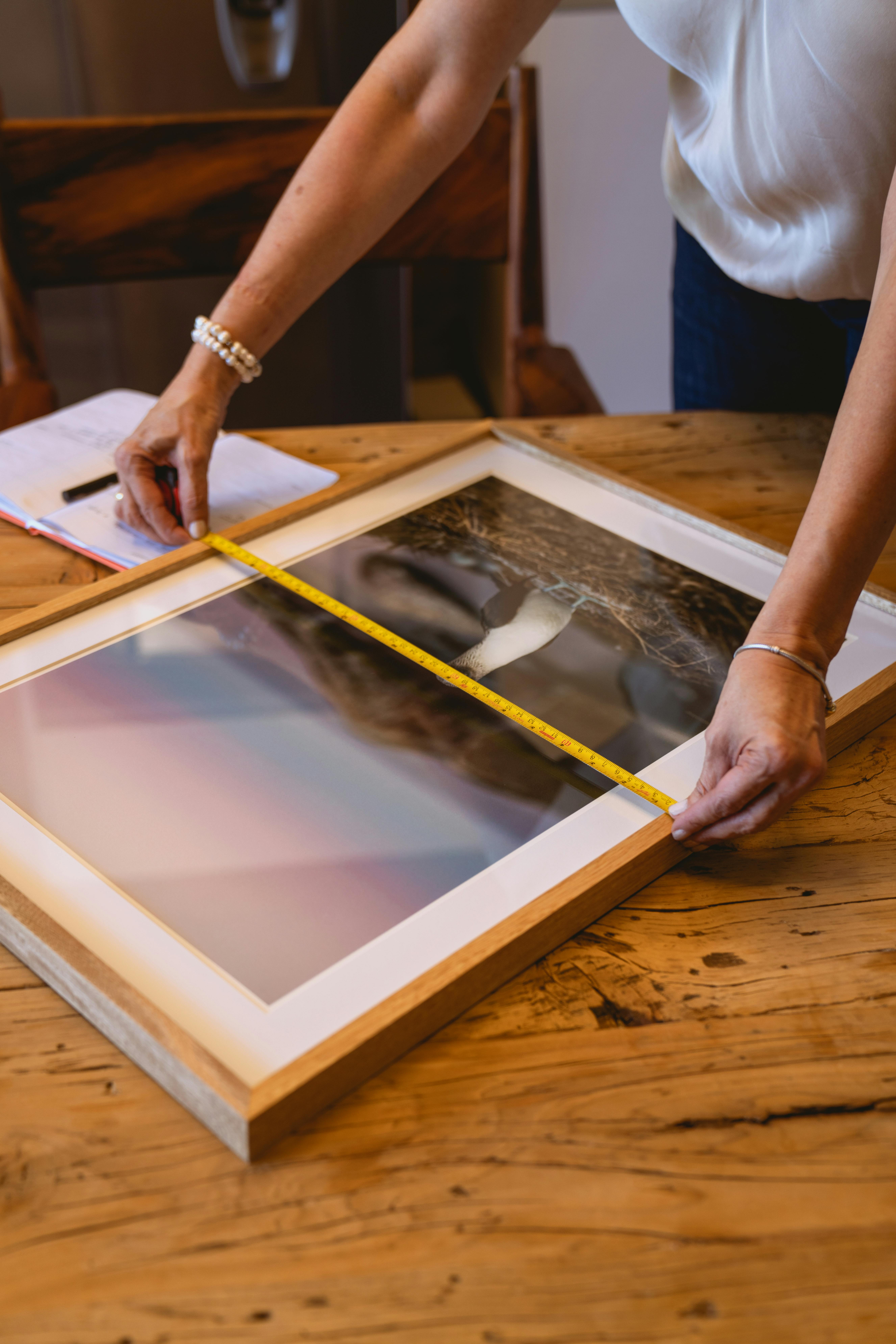
[credit](https://images.pexels.com/photos/8784734/pexels-photo-8784734.jpeg), [licence](https://creativecommons.org/public-domain/)
* **Pros:**
* Excellent integrated storage for smaller supplies, keeping them organized, clean, and easily accessible.
* Compact, and often provides a stable, flat working surface which is invaluable for mediums like pastels and watercolors.
* Very sturdy for tabletop use, preventing accidental nudges or collapses, and can often be tripod-mounted for standing work.
* **Cons:**
* Limited canvas size support, typically for smaller artworks only.
* Primarily designed for sitting or requires a separate stand/tripod for standing work, which adds another item to carry.
* Limited height adjustment and less flexible in terms of canvas angles compared to tripod easels.
* **Ideal User:** Studio artists with limited space, watercolorists, pastel artists, illustrators, or those who travel by car and prefer a contained, organized kit for smaller, focused works or studies.
### Tabletop Portable Easels
As the name suggests, these small, lightweight easels are designed to sit on any flat surface you can confidently find – a picnic table, a park bench, a sturdy log, or even a large rock. They are absolutely perfect for artists with limited studio space, or those who truly enjoy painting in cafes or while traveling exceptionally light. Offering basic canvas support, they can be surprisingly stable given their minimal footprint. Some even cleverly include small drawers for brushes or paint tubes. They are ideal for intimate studies or working with smaller canvases, typically up to 20 inches (50 cm) in height, and are often the most affordable entry point into portable painting, often weighing less than 1-2 kg (2-4 lbs), and supporting canvases up to 3 kg (7 lbs). They typically accommodate canvases with stretcher bars up to 1.5 cm (0.6 inches) thick.

[credit](https://images.zenmuseum.com/art/382/scan.jpeg), [licence](https://creativecommons.org/public-domain/)
* **Pros:**
* Very compact, exceptionally lightweight, and highly affordable, making them accessible to almost everyone.
* Great for small studios, painting in cafes, or quick, spontaneous sketching sessions.
* Quick to deploy and pack away, ideal for impromptu creative moments.
* **Cons:**
* Strictly requires a table or other stable flat surface for use, which might not always be available outdoors.
* Very limited adjustability in height and angle.
* Strictly for smaller canvases/panels, not suitable for larger works.
* **Ideal User:** Beginners, students, urban sketchers, or artists who prefer to work small, have limited budget, or only need a basic support for their canvas on existing surfaces.
### Convertible/Hybrid Easels
These clever designs are, to my mind, some of the most innovative and often underrated, aiming to offer the best of multiple worlds. They often combine elements of tripod and tabletop easels, or integrate features in unexpected ways. You might find a compact tabletop sketchbox that comes with attachable telescopic legs that screw into the base, allowing it to function both as a sitting and a standing easel. Or a lightweight tripod that has an integrated, though minimal, storage tray or a small folding side table. Some French easels are even designed to allow their box section to detach and function as a standalone tabletop easel. These hybrids are fantastic for artists who need maximum versatility without committing to the full weight and bulk of a traditional French easel. They might require a slightly more involved setup than a single-purpose easel, but the trade-off in flexibility is often well worth it. They can typically accommodate small to medium canvases, with maximum sizes depending heavily on the specific hybrid design, generally supporting canvas weights of 3-7 kg (7-15 lbs). Stretcher bar depth accommodation varies widely but typically ranges from 1.5 cm (0.6 inches) to 3 cm (1.2 inches).
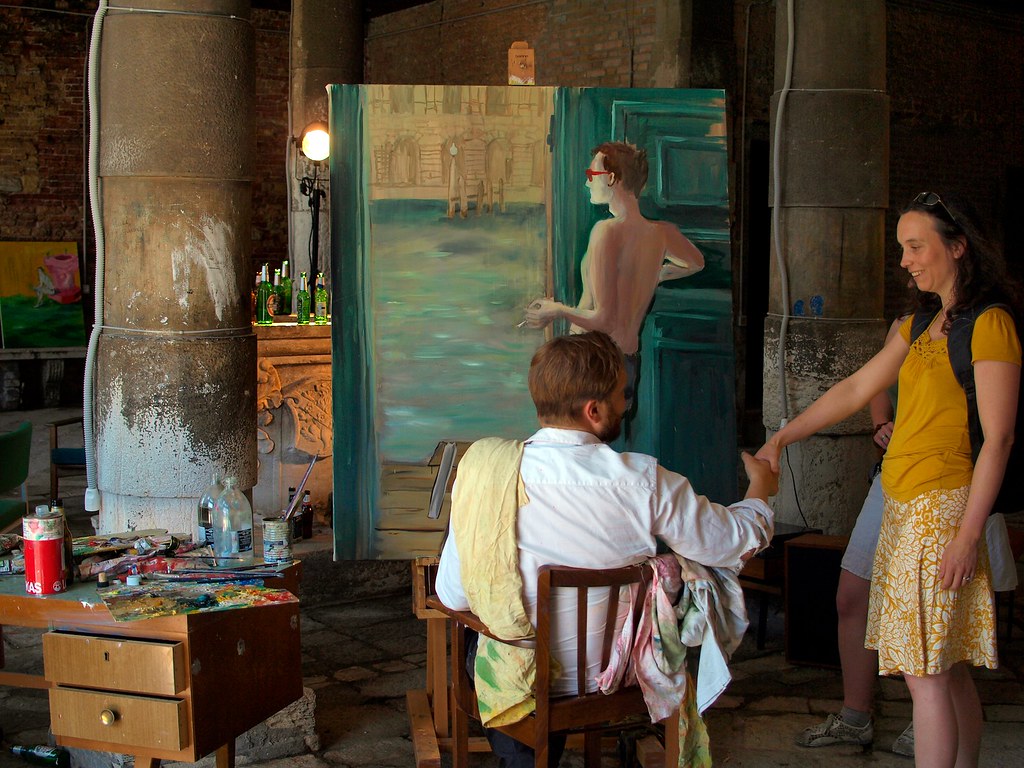
[credit](https://live.staticflickr.com/2484/3659932109_dd9677ff13_b.jpg), [licence](https://creativecommons.org/licenses/by-nc-sa/2.0/)
* **Pros:**
* Highly versatile and multi-functional, optimizing space and utility for diverse painting scenarios (e.g., converts from tabletop to standing).
* Offers flexibility for both standing and sitting work, or for different mediums, adapting to your ergonomic needs.
* Can provide a good balance between integrated storage and overall portability.
* **Cons:**
* Can sometimes be a "master of none" if not well-designed, lacking the specific extreme strengths (e.g., ultimate stability or ultimate lightness) of dedicated models.
* Setup might be slightly more involved or require more distinct steps than a simple, single-purpose easel.
* Potentially higher cost than basic models due to added complexity and engineering.
* **Ideal User:** Artists who need ultimate adaptability for varying painting environments and styles, those who regularly switch between sitting and standing, or artists who appreciate smart, multi-functional design for a comprehensive mobile studio experience.
---
## Quick Guide: Your Ideal Portable Easel at a Glance
To help you quickly pinpoint the best choice for your needs, here's a summarized comparison of the main portable easel types, including their typical weight ranges:
| If you prioritize... | Consider this type... | Why it's a good fit... | Best For... | Typical Weight Range | Max. Stretcher Bar Depth |
| :------------------- | :-------------------- | :--------------------- | :---------- | :------------------- | :----------------------- |
| **Max Portability & Speed** | Tripod Easel | Extremely lightweight, fast setup, compact, supports diverse canvas sizes. | Hikers, Urban Sketchers, Watercolors, Students | 1-3 kg (2-7 lbs) | ~2.5 cm (1 inch) |
| **Integrated Storage & Stability** | French Easel | Full mobile studio, robust, handles larger canvases, classic aesthetic. | Oils, Acrylics, Serious Plein Air, Car Travel | 5-7 kg (11-15 lbs) | ~3.5 cm (1.4 inches) |
| **Balance of Storage & Portability** | Half-Box Easel | Good compromise, contained setup, lighter than French, suitable for small to medium canvases. | Oils/Acrylics (medium), Organized Plein Air (moderate portability) | 3-5 kg (7-11 lbs) | ~3 cm (1.2 inches) |
| **Compact Tabletop Workspace** | Sketchbox Easel | Ideal for small works, watercolors/pastels, flat surface, excellent organization. | Pastels, Watercolors (small), Studies, Limited Studio Space | 2-3 kg (4-7 lbs) | ~2.5 cm (1 inch) |
| **Budget & Minimalist Setup** | Tabletop Easel | Very affordable, lightweight, great for cafes/small spaces, for small canvases. | Beginners, Casual Sketching, Small Works, Extremely Light Travel | <1-2 kg (2-4 lbs) | ~1.5 cm (0.6 inches) |
| **Maximum Versatility** | Convertible/Hybrid Easel | Adapts to sitting/standing, different needs, multi-functional for small to medium canvases. | Mixed Media, Variable Painting Scenarios, Ergonomic Flexibility | 3-7 kg (7-15 lbs) | ~1.5-3 cm (0.6-1.2 inches) |
This table provides a snapshot, but remember to delve into the detailed descriptions for each type to truly understand their nuances.
---
## Curator's Top Picks: Detailed Reviews and Comparisons
After evaluating countless models, putting many to the test myself, and gathering invaluable feedback from artists across various disciplines, I've selected a few standouts that truly represent the best in portability, functionality, and value. My aim here is not just to list features, but to give you a genuine feel for what it's like to paint with these companions. For those seeking the absolute pinnacle of lightweight strength, high-end carbon fiber tripods exist, offering unparalleled performance, but often at a premium price point I won't fully detail here. For `/finder/page/best-studio-easels-for-professional-artists-a-complete-review`, you'd explore a different set of criteria, designed for static, heavy-duty use.
### 1. The Robust Travel Companion: Julian French Half-Box Easel
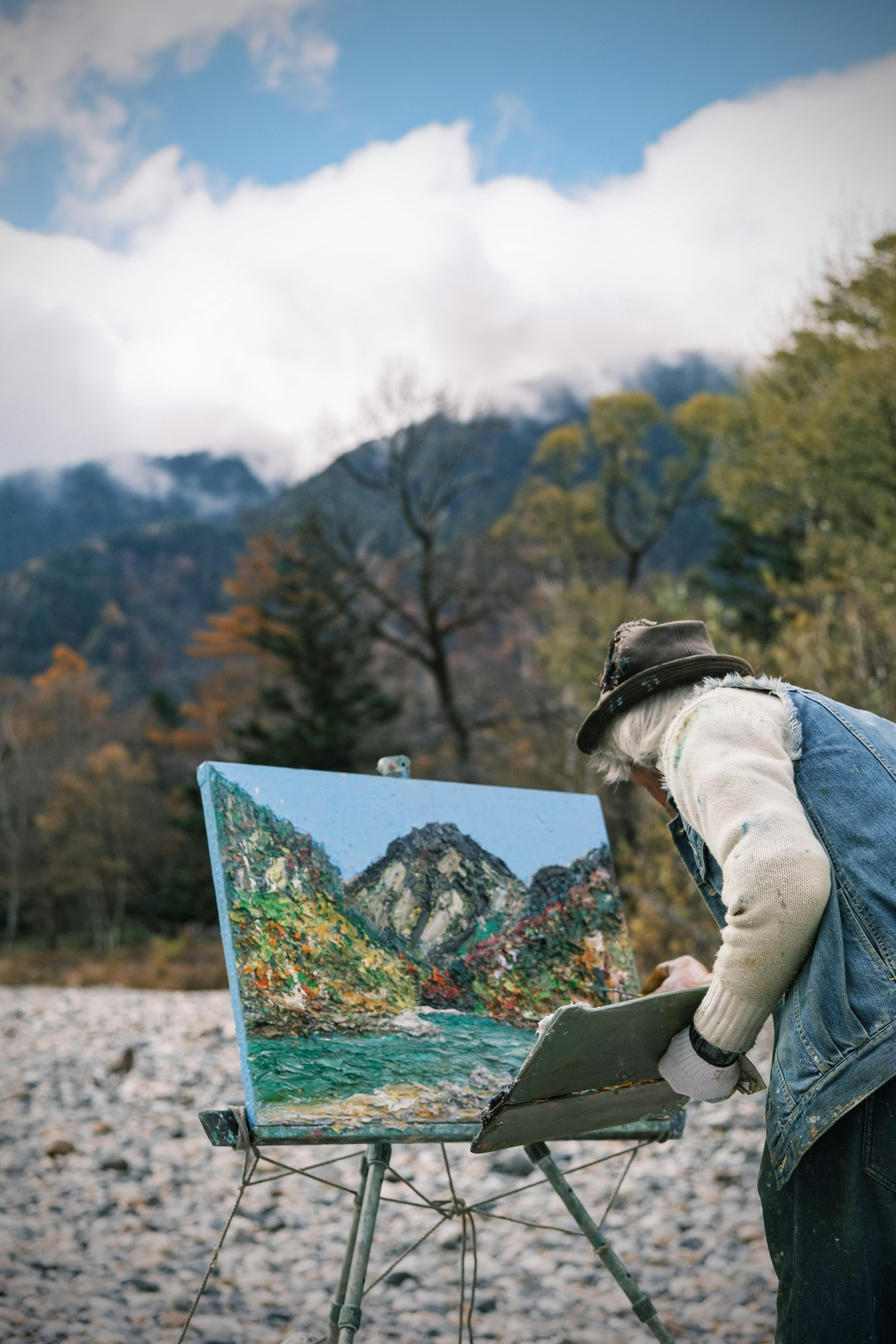
[credit](https://images.pexels.com/photos/18952243/pexels-photo-18952243/free-photo-of-artist-painting-in-mountains.jpeg), [licence](https://creativecommons.org/public-domain/)
The Julian French Half-Box Easel isn't just an easel; it's a testament to traditional craftsmanship, and for me, it's a benchmark for quality in portable easels. Crafted from beautifully seasoned beechwood, its smooth, tactile surface and gleaming brass-plated hardware exude a quiet confidence and enduring quality. It offers exceptional stability – a real godsend on breezy days – and a surprisingly spacious storage drawer for its size, perfect for a good range of `/finder/page/definitive-guide-to-paint-types-for-artists` and `/finder/page/best-acrylic-paint-brushes-for-artists`. While heavier than a tripod, its contained nature means you grab one item and go, knowing you have everything you need. I particularly appreciate the linen canvas holder, which provides a gentle yet secure grip for canvases up to **32 inches (81 cm) high**, weighing up to **10 kg (22 lbs)**, and accommodating stretcher bars up to **3 cm (1.2 inches) thick**. It's also remarkably suitable for holding larger sketchbooks or drawing boards if you adapt the canvas holder slightly, adding to its versatility. This is the easel I often reach for when I know I'll be working for several hours and want a truly complete, stable setup.
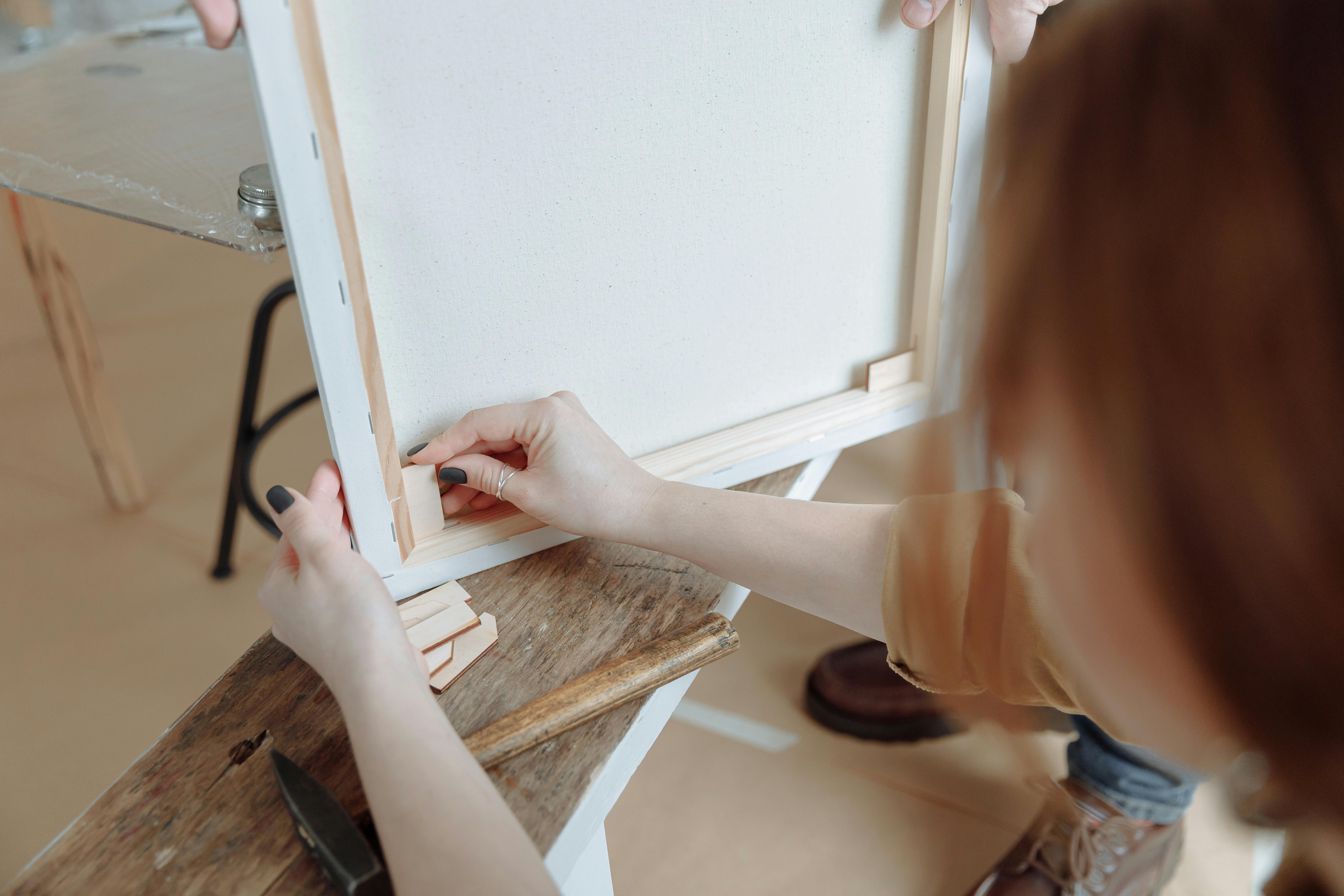
[credit](https://images.pexels.com/photos/6731909/pexels-photo-6731909.jpeg), [licence](https://creativecommons.org/public-domain/)
* **Features:** Solid seasoned beechwood construction, elegant brass hardware, spacious sliding drawer for supplies, linen canvas holder, comfortable leather handle, built-in wooden palette.
* **Pros:** Highly durable and meticulously built to last for decades, very stable even in light to moderate winds, ample integrated storage for a comprehensive setup, comfortable to carry thanks to the ergonomic leather handle, classic aesthetic that feels genuinely inspiring and timeless.
* **Cons:** Heavier than aluminum tripods (typically around 4-5 kg / 9-11 lbs), higher price point reflects its superior quality, takes a little longer to set up compared to simpler models, can feel bulky for long hikes or crowded urban environments.
* **Maintenance Tips:** Immediately wipe down paint splatters with a damp cloth; for oil paint, use a small amount of solvent like mineral spirits. Periodically apply a quality wood conditioner or wax (specifically formulated for wood art tools, such as a beeswax polish or a natural tung oil blend) to prevent drying and maintain the wood's luster, especially if it has an oiled finish. For varnished finishes, a simple damp cloth suffices. Regularly check and tighten brass screws if they loosen, and lightly lubricate hinges if they become stiff with a dry, art-safe spray.
* **Ideal For:** Artists working predominantly with oils or acrylics, those who require integrated storage for a full setup, regular plein air painters seeking a reliable, sturdy, and inspiring mobile studio, or artists who travel primarily by car and prioritize a robust, comprehensive workstation.
### 2. The Lightweight Plein Air Essential: Mabef M/27 Lightweight Aluminium Easel
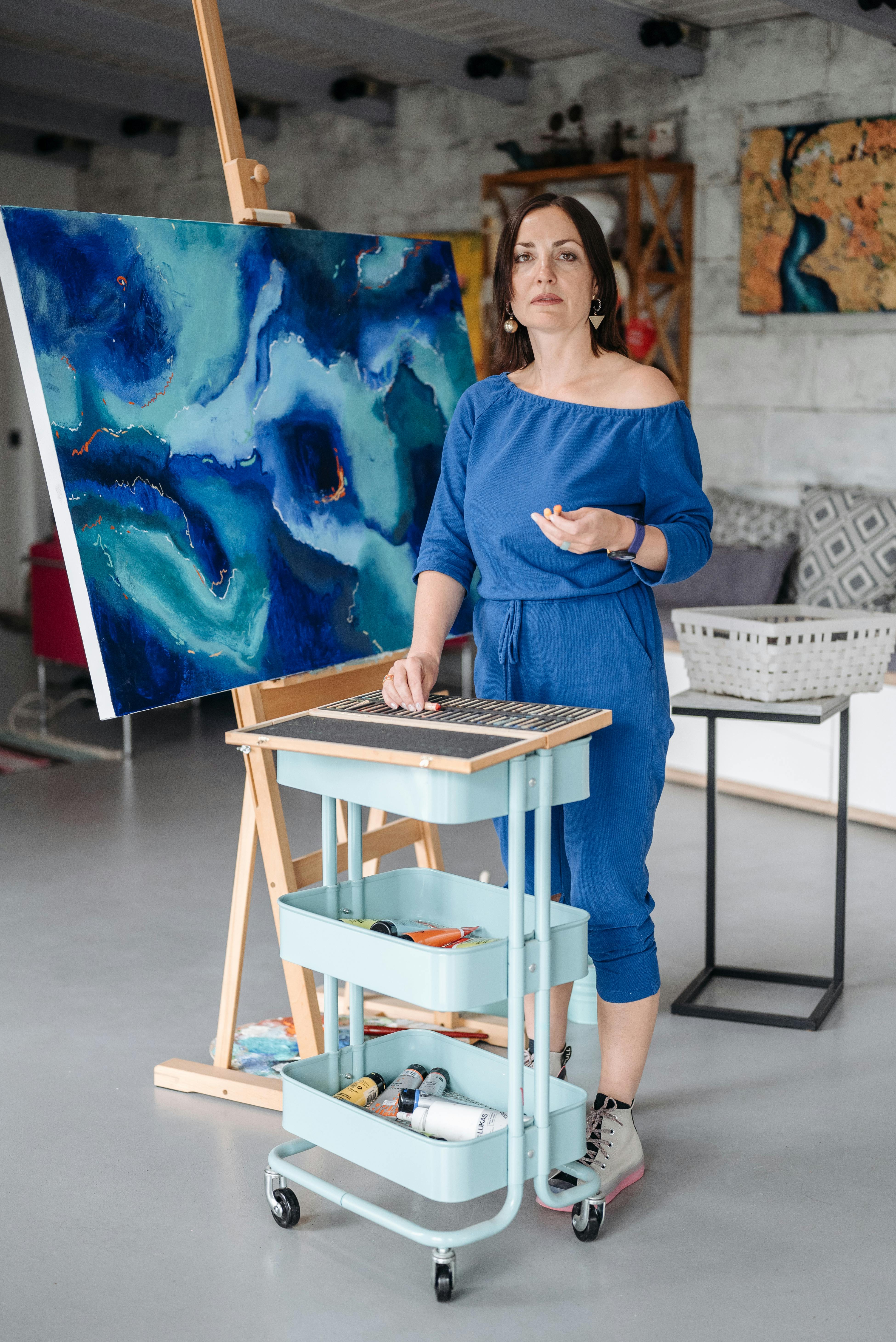
[credit](https://images.pexels.com/photos/8381965/pexels-photo-8381965.jpeg), [licence](https://creativecommons.org/public-domain/)
Mabef, a name synonymous with high-quality studio easels, also offers superb portable options, and the M/27 aluminum tripod easel is a featherlight marvel. Weighing in at a mere **1 kg (just over 2 lbs)**, it's the epitome of grab-and-go portability, perfect for artists who prioritize minimal weight and speed above all else. I've taken this easel on countless urban sketching adventures and short hikes, and it’s incredibly quick to deploy. It reliably supports canvases up to a generous **45 inches (114 cm) in height** and typically handles canvas weights up to about **5 kg (11 lbs)**, accommodating stretcher bars up to **2.5 cm (1 inch) thick**, making it a firm favorite for watercolorists and sketch artists who might also appreciate `/finder/page/best-watercolor-paper-for-artists-review`. If your primary goal is to get out and paint *fast* and light, this is a strong contender. Its compatibility with standard tripod accessories also means you can often attach small clamp-on tables for holding water cups or palettes, significantly enhancing its utility.
* **Features:** Durable anodized aluminum construction, telescopic legs with rapid quick-release clips, adjustable canvas tray that can tilt to various angles (including near-flat), incredibly lightweight design, carrying bag included.
* **Pros:** Extremely light and compact when folded, very fast to set up and take down, highly adjustable for various heights and angles (accommodates both standing and sitting) and canvas orientations. Excellent value for its portability, and widely compatible with tripod accessories.
* **Cons:** No integrated storage (requires a separate art bag for all supplies), may be less stable in strong winds compared to wooden box easels (definitely requires adding weight for security in breezy conditions). Its lightness means it can be accidentally knocked over more easily than a heavier easel.
* **Maintenance Tips:** Simply wipe down aluminum parts with a damp cloth after use. Avoid abrasive cleaners that could damage the anodized finish. Ensure telescopic leg clips and twist-locks (if present) are kept free of dirt, dried paint, or debris; a dry silicone spray can work wonders here to maintain smooth operation without attracting dust. Store dry to prevent any potential oxidation or pitting corrosion over time.
* **Ideal For:** Hikers, urban sketchers, watercolor artists, students, or anyone seeking ultimate portability and a fast, minimalist setup for quick studies and on-the-go inspiration. It's the perfect companion for an impromptu `/finder/page/what-is-plein-air-painting` session.
### 3. The Compact Studio-on-the-Go: Richeson Dulce Sketchbox
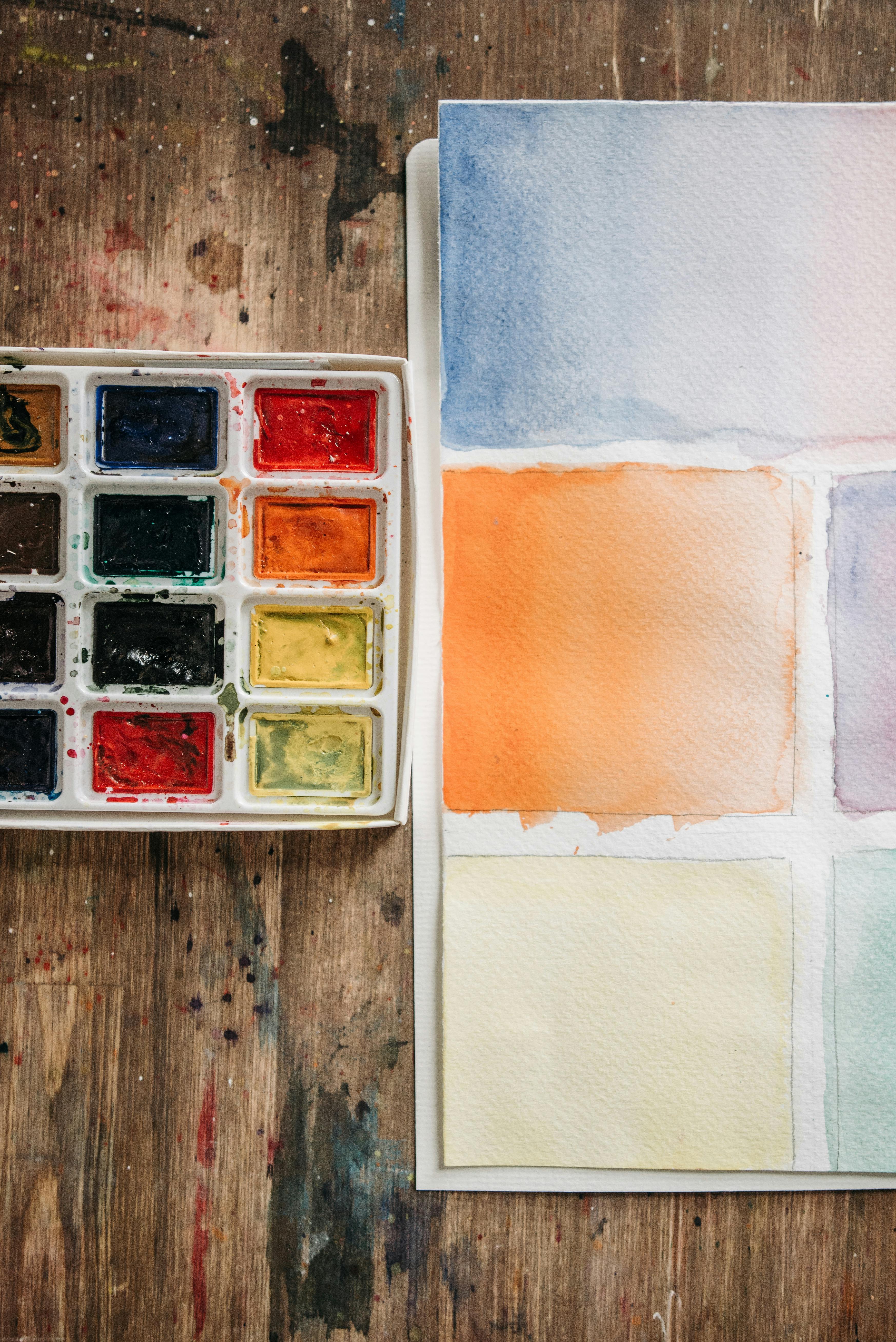
[credit](https://images.pexels.com/photos/6925017/pexels-photo-6925017.jpeg), [licence](https://creativecommons.org/public-domain/)
The Richeson Dulce Sketchbox is an elegant and highly practical solution for those who crave a contained workspace for smaller projects. It typically accommodates canvases or panels up to about **14x18 inches (35x45 cm)** and supports canvases weighing up to **5 kg (11 lbs)**, with stretcher bars up to **2.5 cm (1 inch) thick**, making it ideal for studies, detailed work, or specific mediums. Crafted from durable wood, it features a generous interior for tubes, brushes, and even small palettes, with a lid that securely holds a panel or canvas at various angles, including flat. I've seen this easel favored by pastel artists (who deeply appreciate the flat, adjustable working surface to manage dust) or those doing intricate watercolor studies. It offers an excellent, compact alternative to a full `/finder/page/best-studio-easels-for-professional-artists-a-complete-review` for smaller works, allowing you to create your art in almost any environment with a flat surface. For artists working with smaller canvases, attaching a small tripod to its base can convert it into a standing easel, adding significantly to its versatility.

[credit](https://images.pexels.com/photos/8467263/pexels-photo-8467263.jpeg), [licence](https://creativecommons.org/public-domain/)
* **Features:** Solid wood construction, multiple internal compartments for organized storage, adjustable lid support for various working angles (including flat), secure closure with metal latches, comfortable carry handle, often includes a small wooden palette.
* **Pros:** Excellent for organization and keeping supplies contained and clean, provides a stable, flat working surface which is invaluable for certain mediums, compact tabletop footprint, very sturdy for its size, and can often be tripod-mounted for standing work.
* **Cons:** Primarily for smaller artworks, requires a table or a separate tripod for standing work (which adds another item to carry and set up), limited height adjustment compared to full-size easels.
* **Maintenance Tips:** Wipe down the wooden surfaces immediately if paint or pastel dust accumulates. A soft brush or compressed air can effectively remove pastel residue from compartments. Avoid excessive moisture on the wood. Periodically check hinges and latches for smooth operation and security. Consider a light wax application if the wood appears dry or to maintain an oiled finish, using a product like beeswax polish.
* **Ideal For:** Studio artists with limited space, watercolorists, pastel artists, illustrators, or those who travel by car and prefer a contained, organized kit for smaller, focused works and detailed studies. It's also fantastic for workshops or classes where a tabletop setup is preferred.
---
## Comparison Table: Portable Easels at a Glance
| Feature | Julian French Half-Box Easel | Mabef M/27 Aluminium Easel | Richeson Dulce Sketchbox |
| :------------------ | :------------------------------- | :----------------------------- | :------------------------------ |
| **Material** | Seasoned Beechwood | Anodized Aluminum | Solid Wood |
| **Weight** | Moderate (approx. 4-5 kg / 9-11 lbs) | Very Lightweight (approx. 1 kg / 2.2 lbs) | Compact (approx. 2-3 kg / 4.4-6.6 lbs) |
| **Stability** | Excellent (in most conditions) | Good (can be affected by wind; needs weighting) | Excellent (tabletop) |
| **Storage** | Integrated sliding drawer | None (requires separate bag) | Multiple internal compartments |
| **Max. Canvas Size (Height/Dimension)** | Up to 32 inches (81 cm) | Up to 45 inches (114 cm) | Up to 14x18 inches (35x45 cm) |
| **Max. Canvas Weight** | Up to 10 kg (22 lbs) | Up to 5 kg (11 lbs) | Up to 5 kg (11 lbs) |
| **Max. Stretcher Bar Depth** | Up to 3 cm (1.2 inches) | Up to 2.5 cm (1 inch) | Up to 2.5 cm (1 inch) |
| **Setup Time** | Moderate (few minutes) | Fast (under 1 minute) | Fast (tabletop, under 1 minute) |
| **Ideal For** | Oils, Acrylics, Regular Plein Air, Comprehensive Setup | Watercolors, Sketching, Hiking, Speed, Minimalist | Pastels, Watercolors, Small Works, Detailed Studies, Organized Kit |
---
## Maintaining Your Portable Easel: A Little TLC Goes a Long Way
Proper care extends the life of your equipment, plain and simple. It's a small investment in time that pays dividends in reliability and longevity, preventing frustrating malfunctions and premature wear. Think of your easel as a trusted companion – it absolutely deserves a little TLC after facilitating your creative adventures. After all, it's facilitating your creative adventures, so why wouldn't you want to keep it in prime condition? I've seen too many good easels fall into disrepair because of neglect, and a moment's care can save a lot of frustration (and money!) down the line.

[credit](https://upload.wikimedia.org/wikipedia/commons/1/1f/Verftubes_waarop_de_aanduiding_transparant_of_dekkend_te_zien_is.JPG), [licence](https://creativecommons.org/licenses/by-sa/4.0)
For **wooden easels**, I always recommend wiping down any paint splatters immediately to prevent staining. For oil paints, a dab of mineral spirits or odorless thinner on a rag works wonders; for acrylics, warm soapy water will usually do the trick if caught quickly. Periodically check and tighten any screws and bolts, as vibration from travel can loosen them. If the wood feels dry or looks dull, a light coat of a specialized wood wax or conditioner, like a beeswax polish formulated for art tools or a natural tung oil blend, can truly revitalize it, protecting it from moisture and temperature fluctuations. For wooden easels with a **varnished finish**, a simple damp cloth and mild soap are generally sufficient. For those with an **oiled finish**, re-oiling periodically with natural tung oil or linseed oil can help maintain their protective layer and luster. Avoid leaving wooden easels in direct, harsh sunlight for extended periods, as this can cause cracking or warping.
For **aluminum and carbon fiber** easels, a quick wipe-down with a damp cloth is usually sufficient. Pay particular attention to joints, clips, and telescopic mechanisms to ensure no grit, dried paint, or debris interferes with their smooth operation. A dry silicone spray (like a bicycle chain lubricant, but ensure it's dry and non-oily) or a tiny amount of graphite powder can work wonders here for smooth glide, though be aware that graphite can attract dust. Always store your easel in a dry place, ideally in a protective carrying bag, to prevent dust, scratches, and potential damage. These considerations are part of a broader understanding of `/finder/page/art-storage-solutions-for-collectors`, even for your most cherished tools!
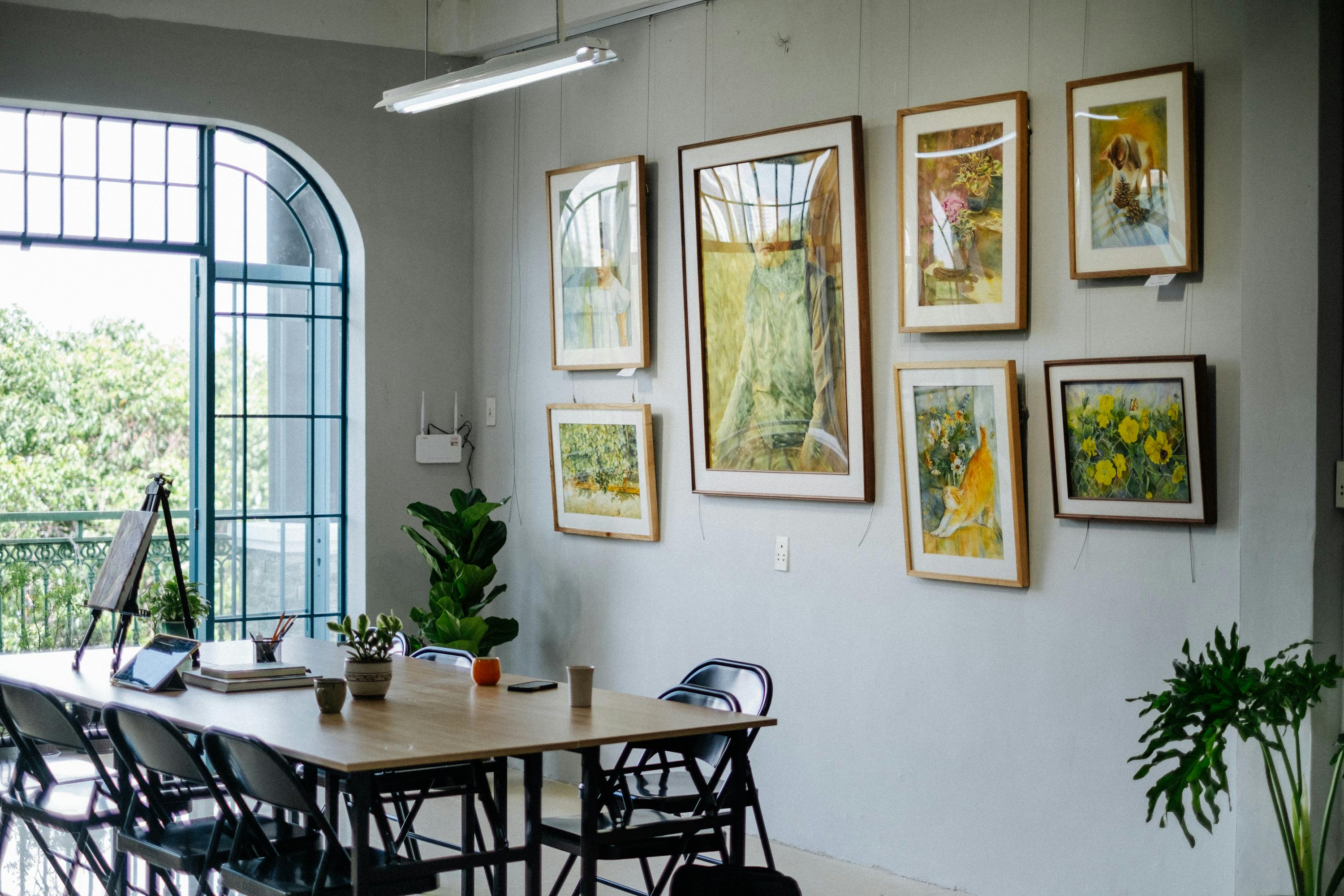
[credit](https://images.pexels.com/photos/17155186/pexels-photo-17155186.jpeg?cs=srgb&dl=pexels-nguyendesigner-17155186.jpg&fm=jpg), [licence](https://creativecommons.org/public-domain/)
---
## Tips for Painting Outdoors: Embrace the Elements
Now that you've chosen your perfect portable easel, here are some essential tips for making the absolute most of your outdoor painting sessions. Venturing outside to paint is an incredibly enriching, almost meditative experience, but it definitely comes with its own set of charming (and sometimes infuriating) challenges. A little preparation and foresight go a long way to ensure a successful and enjoyable session, rather than a frustrating battle with nature. It's not just about the painting; it's about the adventure itself!
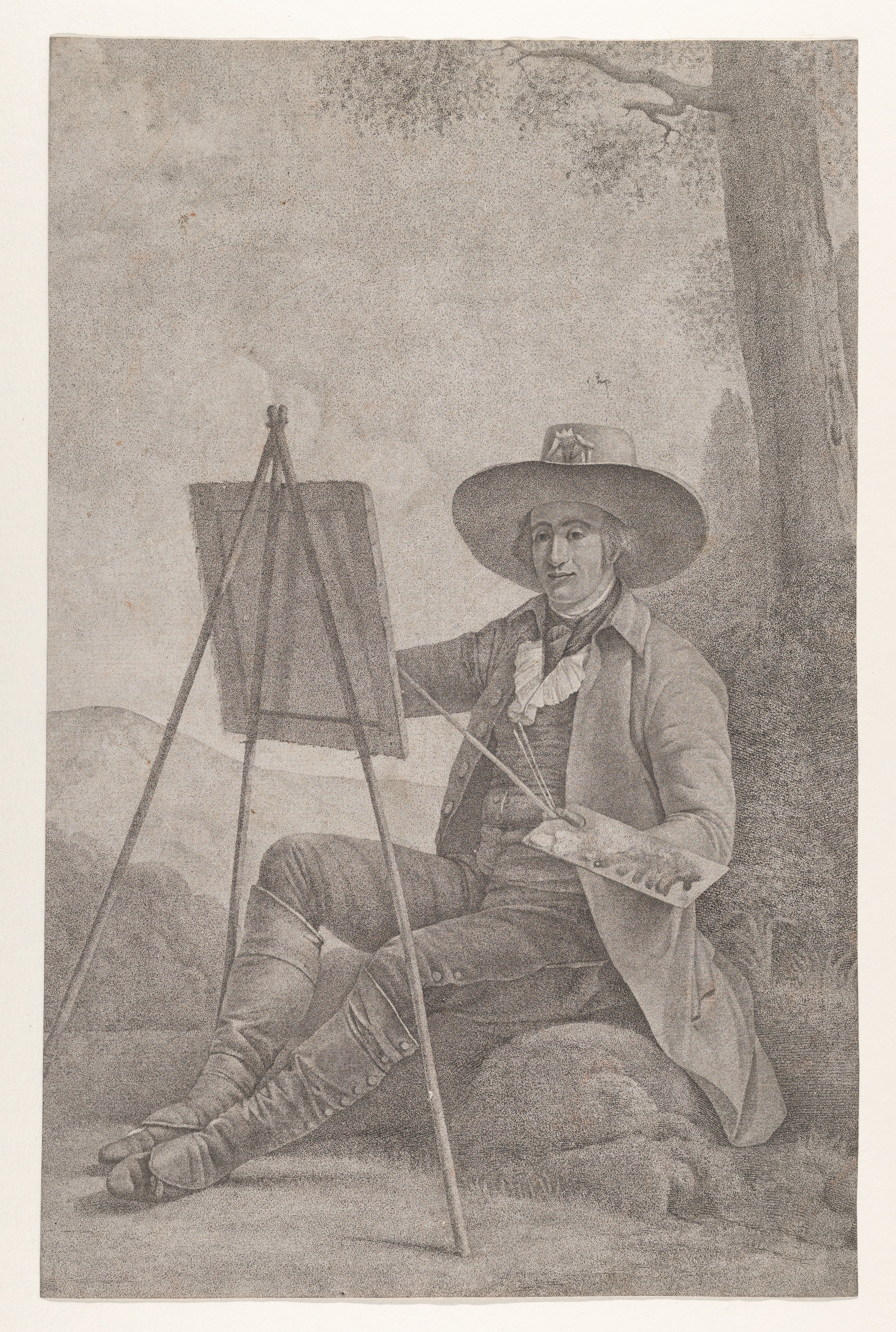
[credit](https://upload.wikimedia.org/wikipedia/commons/2/2b/Plein_Air_Painter_at_an_Easel_MET_DP834385.jpg),
[licence](http://creativecommons.org/publicdomain/zero/1.0/deed.en)
### Preparation is Key (and I often forget bits!)
Before you even step out the door, take a moment for reconnaissance. Check the weather forecast, certainly, but also meticulously consider the direction of the sun throughout your planned painting time. Is it rising or setting, meaning rapidly changing light? Will you be battling harsh midday glare? I often pack only what I absolutely need (though I know that's easier said than done for us artists – the 'just in case' items always seem to multiply!). Beyond paints and brushes, I'll often bring a small toolkit for minor repairs, a spare canvas board or two, a small trash bag for waste (always pack it out!), and maybe a lightweight, sturdy umbrella (like a golf umbrella) for sun or sudden showers. If working with oils or acrylics, laying out your palette beforehand and pre-mixing some foundational colors can save precious time on site. For more foundational knowledge on your medium, consider reading about `/finder/page/definitive-guide-to-paint-types-for-artists`. A small **grey card or color checker** can also be invaluable for "locking in" values and colors when the light is shifting quickly. When packing efficiently, consider decanting mediums into smaller, leak-proof containers or utilizing compact travel paint sets to minimize bulk and weight. It's all part of "the art of packing"!
### Setting Up Your Mobile Studio: Strategically and Ergonomically
#### Location Scouting: Finding Your Muse (and Some Shade)
Choose your spot carefully. Yes, absolutely look for interesting compositions (perhaps applying principles of `/finder/page/understanding-balance-in-art-composition`), but also factor in extreme practicality. Seek shade (your eyes and paints will thank you!), level ground if possible, and consider your proximity to your car or a comfortable seating area. Orient your easel so the sun isn't directly in your eyes, creating painful squinting, or, equally important, creating harsh glare *on your canvas itself*. Finding a spot with consistent, manageable light, whether dappled or overcast, can be as challenging as finding a perfectly lit studio space, but it’s crucial for accurate color mixing and value judgment.
#### Ergonomic Setup: Happy Body, Happy Art
For uneven terrain, don't despair! Many easels have individually adjustable legs. Use small wedges, partially bury leg tips in soft soil, or even carry small, flat plates (like miniature snowshoes) to place under legs for added stability on loose ground like sand or mud. And don't forget a small, sturdy stool if you prefer to sit – sometimes standing for hours isn't sustainable for your back or joints. Prioritize your ergonomic comfort; remember, an hour in an uncomfortable position feels like two, and will ultimately detract from your creative flow. Sometimes, just shifting your body weight, or even the angle of your canvas by a few degrees, can make a monumental difference.

[credit](https://www.flickr.com/photos/asiasociety/4929458890), [licence](https://creativecommons.org/licenses/by-nc-nd/2.0/)
### Dealing with the Elements (and the Critters)
Wind, as I've mentioned, is a common adversary that can turn a peaceful painting session into a frustrating aerial ballet. As discussed earlier, some easels have hooks for weights; in a pinch, your backpack, a small sandbag, or a suitably heavy rock can serve this purpose. If rain is a possibility, a large, easily deployable umbrella (often a golf umbrella) or a light tarp can be a lifesaver, covering both you and your setup. And whatever you do, don't forget effective bug spray and high-SPF sun protection! For larger wildlife, keep food sealed and out of sight, and consider locations where human presence is more common. For smaller insects, a small, art-safe citronella candle (placed strategically away from your easel) or even a portable fan can offer some relief.
As for humidity and temperature, extreme heat can make oil paints runnier and acrylics dry too fast, while cold can stiffen your paints and make working more challenging. Adjust your medium – for example, use a slow-drying medium or an acrylic retarder for acrylics in heat, or a faster-drying medium or slightly more solvent for oils in cold. For very hot days, consider working in the early morning or late evening when temperatures are milder. Always use acid-free materials for longevity, especially in humid conditions, and allow for airflow around your canvas if it's damp. And don't forget, if you're in a natural setting, a curious critter might just pop by for a visit! I once had a cheeky squirrel try to make off with one of my smaller paint tubes – thankfully, I managed to retrieve my precious cadmium red before it became a squirrel's prized possession. Clearly, even woodland creatures appreciate good pigments! For wet paintings, carry a dedicated **wet canvas carrier** or create a temporary cover (e.g., with cardboard and clips) to protect your finished work from dust, leaves, and unexpected drizzles on your way home.
### Safety and Etiquette: Being a Good Steward of Your Surroundings
Always be acutely aware of your surroundings, especially if you're venturing into a remote area. Inform someone of your location and expected return time – it's just good, sensible practice. If you're painting in a public space, be mindful of pedestrians, cyclists, and other park-goers, ensuring your easel and supplies don't obstruct paths or create a hazard. A quick friendly smile and perhaps a brief chat can go a long way in turning curious onlookers into appreciative observers, or even sparking a delightful conversation about art. It's about respecting both your art and your environment, creating a positive experience for everyone involved, and leaving no trace behind but your beautiful artwork.

[credit](https://images.pexels.com/photos/102127/pexels-photo-102127.jpeg), [licence](https://creativecommons.org/public-domain/)
---
## Frequently Asked Questions (FAQ)
I often get asked specific questions about portable easels, so I've compiled some of the most common ones here, hoping to provide quick, clear answers to help you confidently on your way. Consider these the wisdom gained from many a windy day outdoors!
### What is the best portable easel for large canvases?
For large canvases (e.g., above 30 inches / 75 cm in any dimension), **stability** truly becomes paramount over extreme lightness. A robust **French easel** made of seasoned beechwood is often the best choice, as its box design and heavier construction provide superior rigidity and resistance to wind. Crucially, look for a French easel with a substantial, wide canvas holder or tray that can securely grip the bottom edge of a large canvas, preventing wobbling, and accommodating thicker stretcher bars (up to 3.5 cm / 1.4 inches). Some high-end, heavy-duty **tripod easels** with wider footprints, larger telescopic leg diameters, and integrated weight hooks (perhaps even carbon fiber for strength without excessive weight) can also handle larger canvases, but again, ensure the canvas tray is robust enough for the size and weight. When choosing for large canvases, also ensure the easel has an adequate height range to comfortably support the full vertical span of your work without the top edge being out of reach. You'll still need to be very mindful of windy conditions and potentially secure them with additional weights. Always check the manufacturer's maximum recommended canvas size and weight limit.
### What's the difference between a French and a half-box easel?
A **French easel** is essentially a full-sized portable studio, typically featuring a robust wooden box with extensive storage compartments, a large built-in palette, and a substantial easel mechanism. It offers maximum capacity but is heavier and bulkier (5-7 kg / 11-15 lbs). A **half-box easel** is its more compact cousin, usually with about half the storage capacity (fewer or shallower drawers, storing around 8-10 paint tubes) and a smaller overall footprint. It's designed for greater portability while still offering some integrated storage and a palette, making it a great compromise if you need organized space but not the full bulk of its larger sibling (3-5 kg / 7-11 lbs).

[credit](https://images.zenmuseum.com/art/617/picture.jpg), [licence](https://creativecommons.org/public-domain/)
### Are aluminum or wooden easels better for portability?
For sheer portability, **aluminum easels** generally win due to their significantly lighter weight (often 1-3 kg / 2-7 lbs) and often more compact folding mechanisms. They are fantastic for hiking or public transport. **Wooden easels**, while offering superior stability, a classic aesthetic, and often better dampening against vibration, are inherently heavier and bulkier (often 3-7 kg / 7-15 lbs), making them more suitable for car travel or shorter distances. **Carbon fiber** is an even lighter and stronger alternative to aluminum, but it comes at a premium price point, often reserved for those seeking the ultimate balance of strength and minimal mass without compromise.
### Can I use a portable easel for studio work?
Absolutely! Many portable easels, especially the more stable French and half-box models, are perfectly capable of being used for studio work. Their adjustability and sturdy construction can rival some basic studio easels, particularly for medium-sized canvases. Even lightweight tripod easels can serve as secondary studio easels, though they might be less ideal for very large or heavy canvases over long periods, or for complex processes like `/finder/page/how-to-stretch-a-canvas-for-painting`.
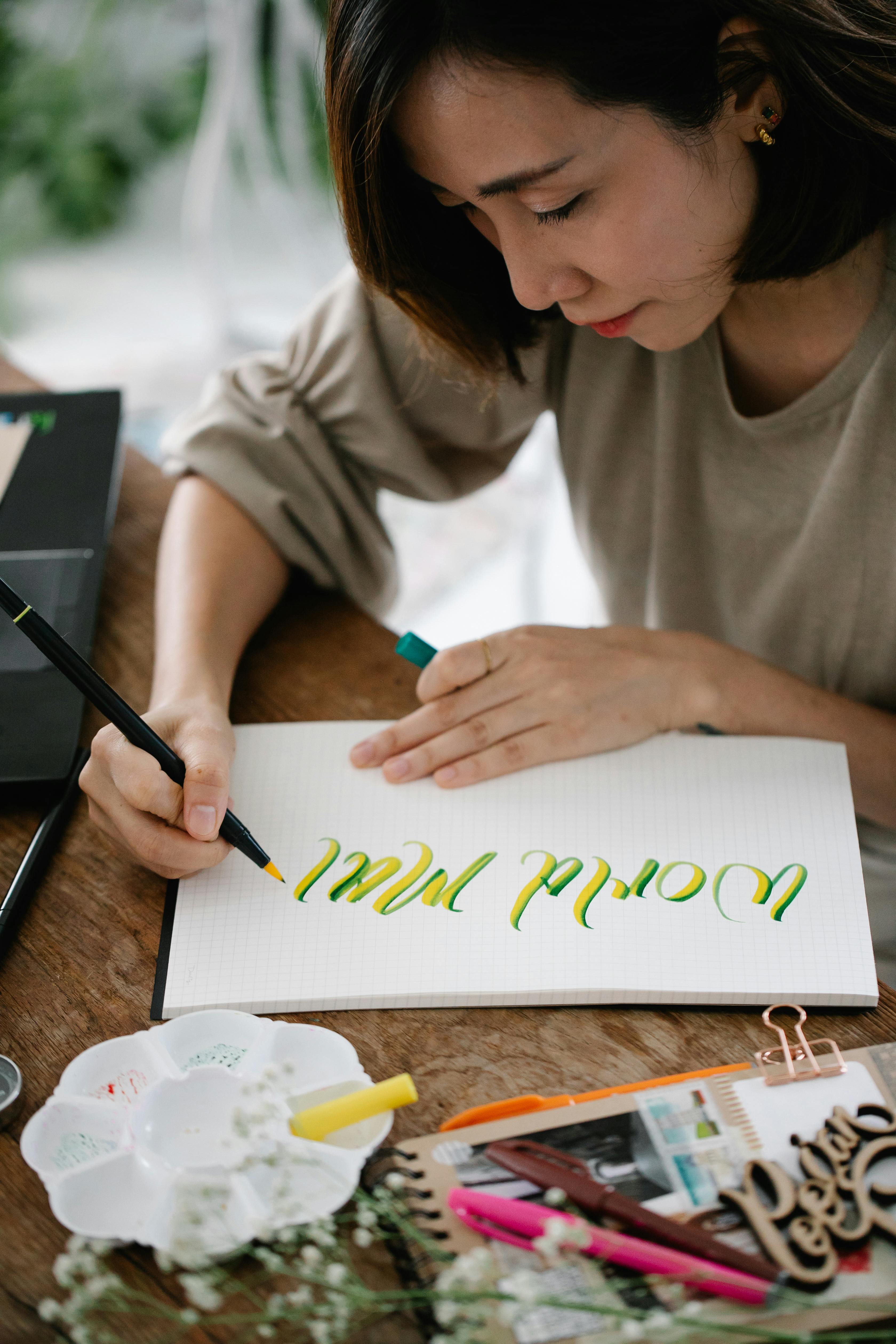
[credit](https://images.pexels.com/photos/8715940/pexels-photo-8715940.jpeg), [licence](https://creativecommons.org/public-domain/)
### How do I choose the right height for my easel?
The right height is entirely dependent on your personal preference and whether you prefer to stand or sit while painting. Most quality portable easels offer ample adjustable heights, typically ranging from a minimum of around 20-30 inches (50-75 cm) for sitting to a maximum of 60-70 inches (150-175 cm) or more for standing. When standing, a good ergonomic guideline is that your hands should be able to comfortably reach the top third of your canvas without straining your shoulder or arm. When sitting, ensure your eye level is roughly in the middle of your work for optimal perspective and to avoid neck strain. Also, consider the angle of your canvas; a slight tilt can help prevent glare and improve your viewing angle, especially when working on a flat plane. Ultimately, personal comfort is paramount, and a good easel allows for flexible adjustment to suit *your* needs and for `/finder/page/understanding-balance-in-art-composition` and overall ergonomic comfort.
### What accessories are essential for a portable easel?
Beyond the easel itself, I consider a few key accessories non-negotiable for outdoor painting. These include: a **protective carrying bag** (to keep your easel clean and prevent scratches), a **water container** (for acrylics or watercolors) or a **brush washer** (for oils), **rags or paper towels**, a **clip-on light** (for evening or low-light conditions), a **lightweight palette**, and a **small, sturdy stool** if you prefer to sit. Depending on your medium, you might also consider a **solvent container with a secure lid**, a **portable palette knife set**, **folding palette cups**, or a **small roll-up tool kit**. For carrying your finished work, a **small, durable wet canvas carrier** is invaluable if you're not using an easel with integrated storage for wet paintings. And, of course, a proper selection of paints, brushes (perhaps `/finder/page/best-oil-painting-brushes-for-artists` or `/finder/page/best-acrylic-paint-brushes-for-artists`), and canvases! Don't forget, sometimes the simplest items are the most essential, and occasionally, an actual `/finder/page/what-is-an-easel-and-what-types-are-there` (a static studio easel) could be a reference for a portable one!
### Are there specific portable easels designed for left-handed artists or specific ergonomic needs?
While most portable easels are ambidextrous by design, meaning they can be operated by either left- or right-handed artists, some specific features can be more ergonomic for left-handed painters. For instance, sketchboxes with sliding drawers might be more convenient if the drawer slides out on the left side, or if the drawer can be accessed from both sides. Similarly, the placement of palette holders or accessory trays on tripod easels might be optimized for right-handed use, but many are modular or rotatable. For specific ergonomic needs, look for easels with highly flexible angle adjustments, a wide range of height settings (to allow for both standing and sitting comfort), and easily accessible locking mechanisms. Some artists with particular physical requirements might even opt for a customized setup or pair a very lightweight tripod with a separate, highly ergonomic chair to create their ideal portable studio. You can also explore **DIY portable easel solutions** if you have very niche requirements or are on a tight budget, often using existing materials to create a custom setup that perfectly fits your unique needs.
---
## Embrace Your Artistic Journey: The Call of the Open Air
So, what are you waiting for? Investing in the right portable easel isn't just about buying equipment; it's about unlocking a vibrant world of artistic possibilities. It empowers you to capture fleeting moments, explore new landscapes, and broaden your creative horizons far beyond the familiar confines of a traditional studio. This exhilarating pursuit of artistic freedom, much like exploring new mediums, discovering iconic galleries like `/den-bosch-museum`, or tracing a deeply personal creative journey in a `/timeline`, is precisely what portable easels truly enable. They bridge the gap between initial inspiration and tangible creation, bringing your artistic vision to life wherever you may roam. Select wisely, venture forth with confidence, and let your art flourish wherever you go. And when you've found that perfect piece, perhaps you'll even be ready to `/buy` your next inspiration, directly inspired by the very world around you. After all, the best art often begins with a simple, inspired step outside. Don't let inspiration pass you by. Grab your chosen companion, step out the door, and let the world become your endlessly inspiring studio. The possibilities are as vast and inviting as the horizon.



